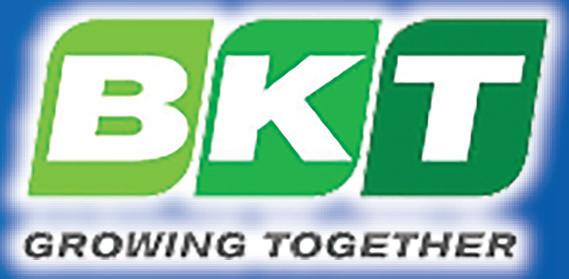






This year’s Mallee harvest is off to a promising start, despite rain slowing progress. Early barley yields are strong and better than expected. While growers juggle weather interruptions, hay cutting, and rising costs, farmers continue to remain optimistic as harvest ramps up across Victoria and southern NSW.


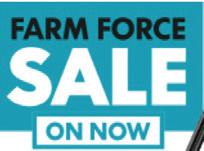





Edmund Coleman
A PETITION calling for greater protection of agriculturallandhasreceivedasignificantswell of support within hours of being launched, with the Victorian Farmers Federation urging clearer planning controls to safeguard against growing development pressures.
The VFF argue productive agricultural land is vulnerable to housing estates, mining approvals, transmission corridors and large-scale energy projects.
“We’re not asking for development to stop,” the petition reads, “we’re asking for it to be planned with intelligence, respect and an eye to the future.”
“The petition is designed to remind governments and decision makers that farmers and the rural community they support are vital to our state’s success.”
In north west Victoria, VFF president Brett Hosking said if housing developments were planned with consideration they would be welcomed by farmers who often struggled to find accommodation for staff
The Quambatook farmer said the development of mining projects and the VNI West transmission line were of primary concern to landowners in the region.
VNI West is the 500kV double-circuit powerline intended to connect Victorian and New South Wales energy grids with new renewable energy generation.
Unlike renewable energy developments such as solar and wind, landowners do not have a say as to whether their land will host the controversial infrastructure.
While some landowners have said the impact of VNI West on their farming practices would be minimal, others remain staunchly opposed to the project and recently denied access to staff seeking to conduct environmental surveys.
Mr Hosking said it was a “case-by-case” basis


as to how landholders would be affected, adding other less-intrusive routes of development were not given adequate consideration.
“What we see is government planning for transmission and seeing it only through the realms of transmission,” he said.
“Decisions are being made by planners in isolation of what’s already happening on country itself.”
Mallee farmers have also long called for stronger protections against future mining expansion, as the region becomes of increasing interest due to its rich deposit of rare earths and mineral sands.
Mining company VHM Limited, which holds
tenements over nearly 3000 square kilometres of land - stretching from southwest of Kerang to around 20kms south of Robinvale - has heralded the “emergence of a major resource province in Victoria”
Mine Free Mallee Farms president Craige Kennedy previously cited Queensland as an example, which has stricter controls in place to safeguard priority agricultural areas.
“These are the systems we need in Victoria,” he said.
With some in the region being impacted by mining, transmission and energy development simultaneously, Mr Hosking said it was easy to feel agricultural land was being
undervalued.
“I think they’re feeling under threat at the moment for sure,” he said.
“It even goes beyond just the farmers to the communities themselves, they’re feeling like they’re not getting a lot of say in what their future will look like, and that’s a really sad situation to be in.
“Hopefully, if we get those signatures… then maybe some of those decision makers might have to pay a little bit more attention to what it is that agriculture is already contributing to the environment.”
The petition attracted almost 3000 signatures within its first 24 hours.

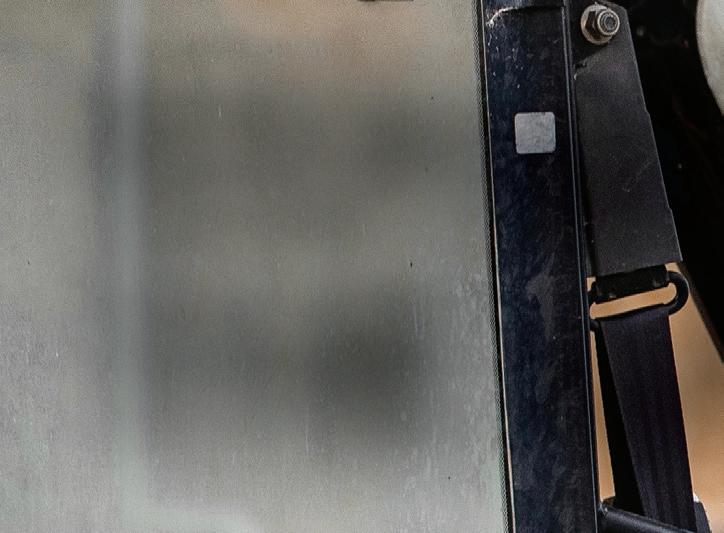
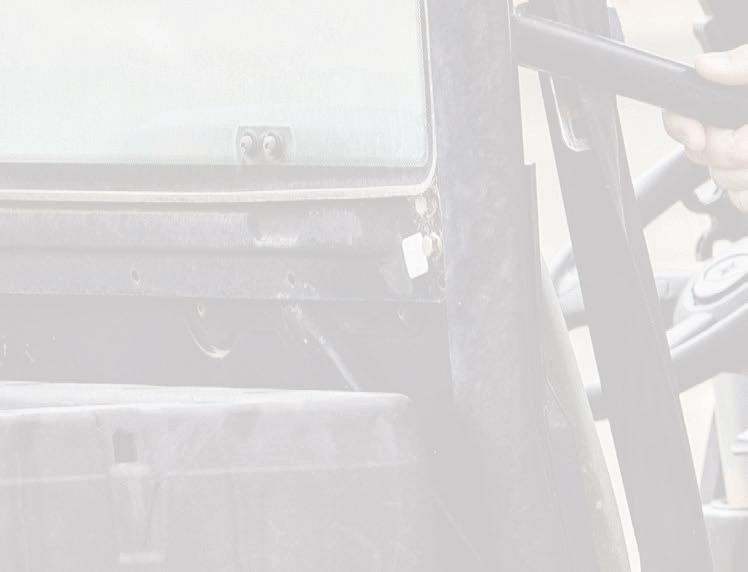

On National Agriculture Day, 21st November 2025, we honour the resilience and determination of Australia’s farmers. Over the past year, disruptions, and policy uncertainty - yet they continue to feed our nation and sustain rural communities. ‘Stand with the Land’ is more than a slogan; it’s a call to action for all Australians to stand shoulderto-shoulder with those who work the land.
At Beck Legal, we understand that farming is more than a business—it’s a way of life. When challenges arise, the right legal advice can make the make difference between surviving and thriving. Our team works alongside works farmers to navigate complex issues such as:


• PropertyandWaterRights: • Securinglandtenureandwaterallocations under evolving legislation.
• Succession Planning: • Succession Ensuring smooth intergenerational transfer of farming businesses to protect family legacies.
• EmploymentandCompliance: • Managingseasonallabourobligations and workplace safety requirements.

• Renewable energy projects: • Supporting landowners through negotiations in the renewable energy transition.
• DisputeResolution: Providing practical solutions for contract disputes, environmental claims, and regulatory compliance. Agriculture is the foundation of our economy, but it’s also vulnerable to forces beyond farmers’ control — climate extremes, global market volatility, and shifting policy landscapes. These pressures demand proactive legal strategies that safeguard assets, reduce risk, and support long-term sustainability. Standing with the land means standing with the people who nurture it. By offering tailored legal services, we help farmers focus on what they

If you’re looking for legal support that understands the unique challenges of farming, contact Beck Legal today. Let’s work together to protect your business, your your family, and your future.



Edmund Coleman
THEStateGovernmenthassaidtheyarecommi ed to protecting agricultural land in response to a petition from the Victorian Farmers Federation.
“We are actively safeguarding agricultural land and building a more resilient food system,” a Victorian government spokesperson said.
The spokesperson stated that efforts were underway to provide communities with greater certainty about where mining developments would occur, while also designating areas where mining would be prohibited.
However, it seems unlikely the Mallee will be declared an area where mining is prohibited.
The Victorian Critical Minerals Roadmap, releasedbythegovernmentlatelastyear,identifies
the state’s northwest as a pilot region to determine where Priority Critical Minerals Development Zones will be declared.
“The priority zones will ensure early consideration of land use and associated community values, to help facilitate smoother project approvals and reduce investment risks, making Victoria an attractive destination for responsibleandrespectedinvestors,”theroadmap states.
A government spokesperson highlighted the economic benefits of mining the state’s supply of critical resources.
“Securing Victoria’s position as a leading global supplier of critical minerals will inject billions of dollars of benefits in our state and create up to 7000 jobs in northwest Victoria alone,” the spokesperson said.
“We’re also developing a scheme that will make sure the benefits of this mining is shared with community.”
It is unclear whether the mining benefit scheme will be retrofi ed to projects which are already at advanced stages of development.
A similar benefits scheme designed for renewableenergydevelopmenthasbeencriticised for conflating genuine community benefits with “the cost of doing business”.
Minister for Energy and Resources Lily D’Ambrosio said investing in critical minerals would shape a “prosperous sustainable future for all Victorians.“

Peter Bannan
A WATER war is erupting with small rural families gearing up for a high stakes showdown at Victorian Civil and Administrative Tribunal, accusing Goulburn-Murray Water and the Essential Services Commission of charging them for services that do not exist.
On 27 November, the group will launch a rare challenge to the ESC’s pricing decisions. It is only the second time consumers have taken the regulator to court and the first time a case has ever reached a full hearing.
The applicants say the stakes are enormous not only for them but for thousands of domestic and stock water users spread across
the region.
For years they have watched their annual fees climb, nearly doubling between 2015 and 2020.
Now they face licence renewal charges set to soar from $700 to $1100 by 2027.
All of it, they argue, is built on fiction.
“For most of us, GMW provides nothing,” spokesperson Cameron Reid said.
“We draw water from small creeks, we maintain our own pumps and pipes and we fund every bit of infrastructure ourselves.
“Yet we are billed as if GMW is out here doing inspections and running equipment. It is not happening.”
The group said their case hinges on three key failures.
First, they allege GMW charges for annual site
inspections that barely occur.
Second, they say irrigator costs are unfairly spread across households via deeming charges that do not apply to unmetered domestic users.
Third, they argue access fees are based on cost drivers that GMW has never been able to prove, despite repeated demands for evidence.
Formed under the banner GMW Concerns, the group says they have been trying to get fair treatment since 2018.
They insist their fight is not about special rules but about basic fairness for small rural Victorians who are too often overlooked.
“We respect the role GMW plays for big irrigation customers,” Mr Reid said.
“But the business model does not fit us.
“We want transparency and fees that match
the services we actually receive.”
A GMW spokesperson said tariffs were approved by the ESC and “reflect GMW’s costs of managing water resources”.
“The tariffs subject to this case decreased in 2025-26 to their lowest amount since 2021,” the spokesperson told North West Farmer.
“The tariffs include an amount that reflects GMW’s costs of protecting customers’ access rights and the environment. This benefits all customers.
“GMW will always ensure that water use is managed sustainably, efficiently, safely and consistently with legal rights.”
The ESC said it respected the review process and wouldn’t comment on ma ers under review.





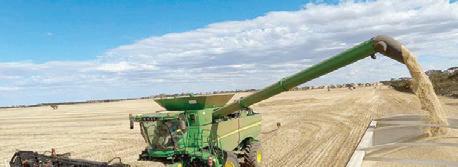










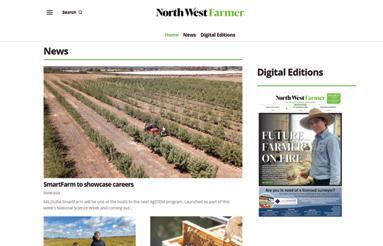

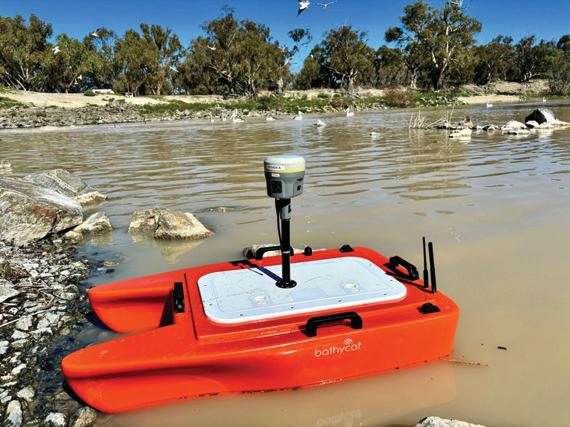
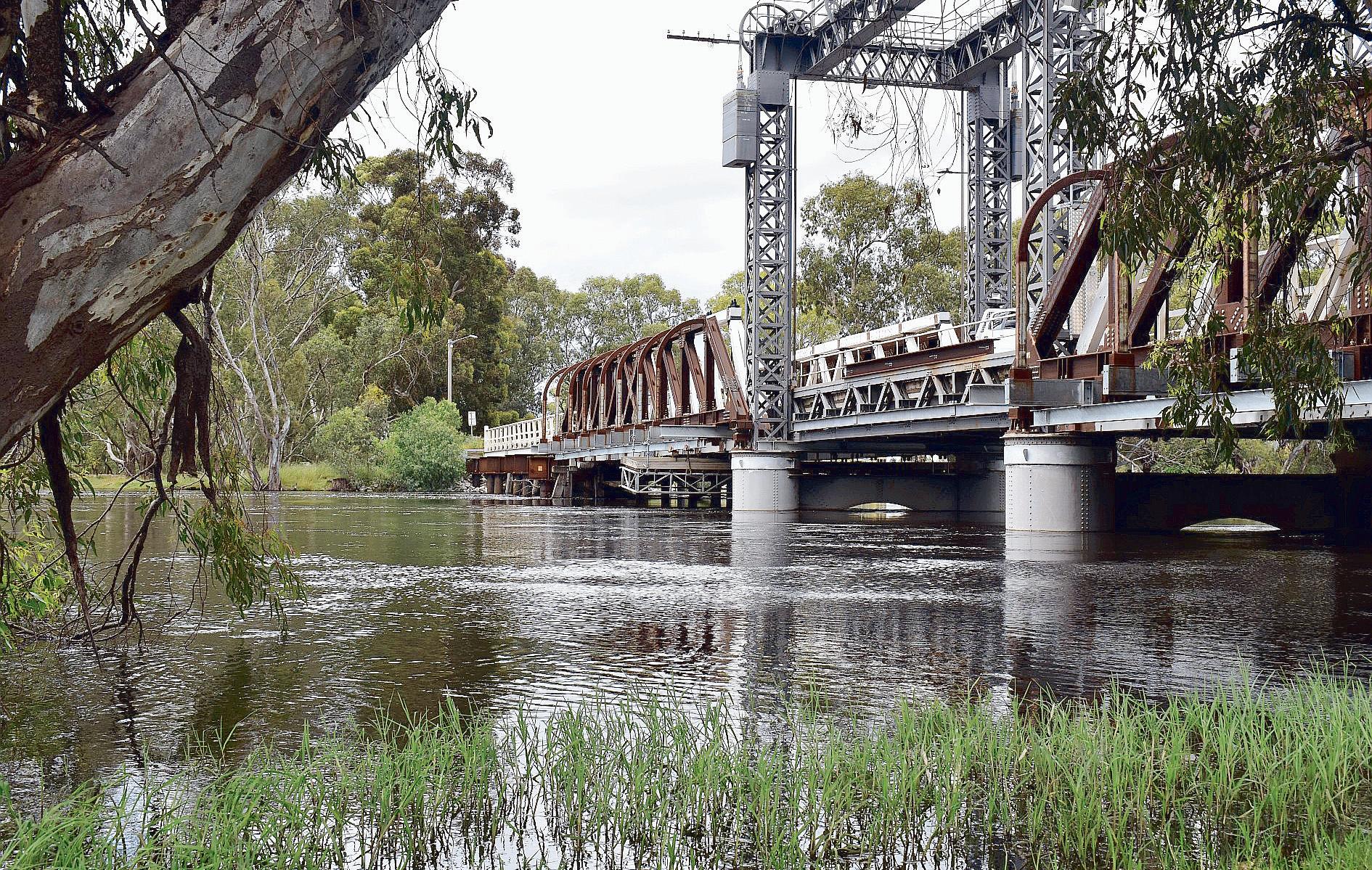
FARMERS, politicians and advocacy bodies are warning further water buybacks announced last week will gut regional towns, drive up food prices and cripple Australia’s dairy heartland.
Federal Water Minister Murray Wa announced plans to seize another 130 gigalitres of water from the Murray-Darling Basin at the Basin Leadership Summit in Adelaide.
The announcement expands the voluntary water purchase program in the southern basin to 300 GL.
Itpushesthegovernmentclosertoitslongcontested 450 GL environmental target.
Farmers say it pushes them closer to the brink.
Australian Dairy Farmers president Ben Benne accused the government of jeopardising food security at the worst possible time.
“We have just caught Woolies using American bu er in stores and now the government is taking away more water from our dairy farmers,“ Mr Benne said.
“Consumers’ access to safe, locally produced food is under a ack from within our own borders.“
Mr Benne said dairy farmers already surrendered huge volumes of water during the millennium drought to help restore environmental flows.
He said they had invested heavily in efficiency, yet Canberra continued to punish them.
He warned new buybacks could slash milk production by up to 270 million litres a year and hit processors with more than $500 million in losses, citing a recent Dairy Australia report.
Victorian Farmers Federation water council chair and Murrabit dairy farmer Andrew Leahy delivered a blistering a ack, accusing the Commonwealth of ignoring science, evidence and rural communities.
“We have lived through the devastation of past buybacks,” Mr Leahy said.
“We saw towns hollowed out, neighbours walk off farms, families lose generations of work.
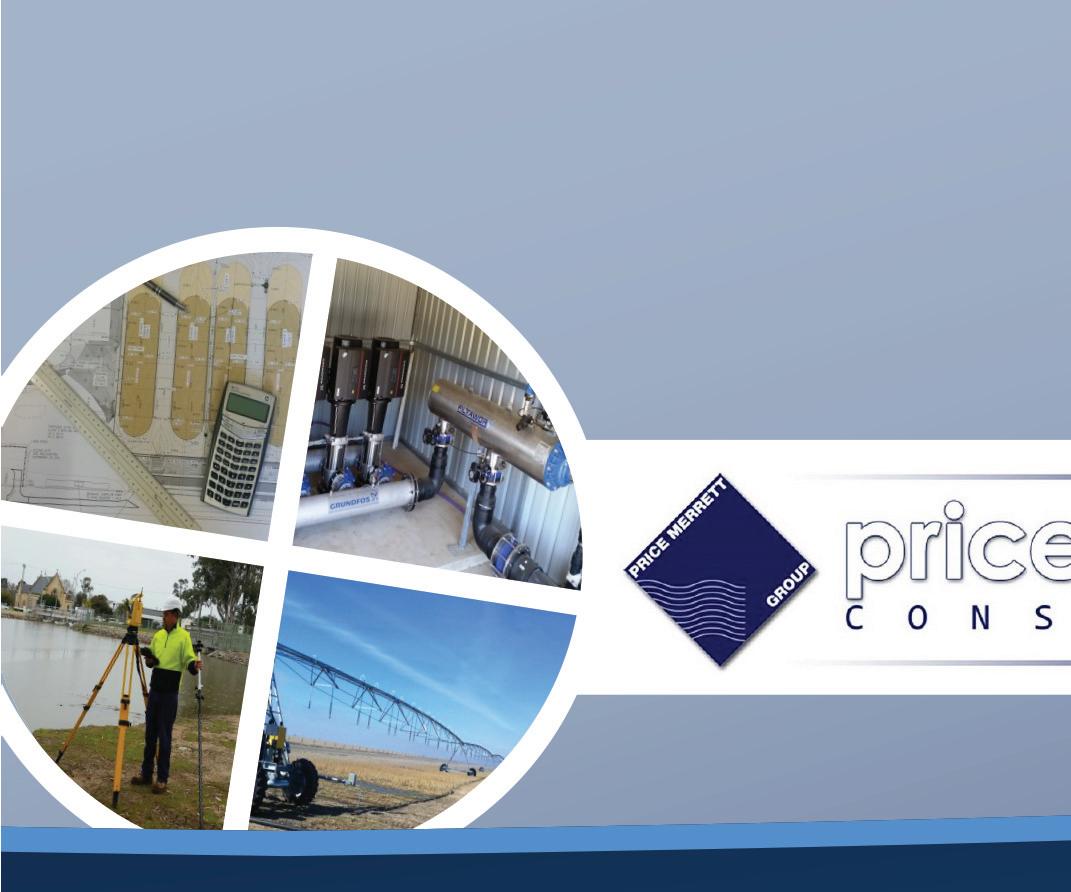

“It is death by a thousand cuts and the government has sharpened the knife again.”
Mr Leahy said Victoria has already provided around 600 GL to Commonwealth programs and warned its high reliability water makes the state a prime target for more purchases.
“We should not be punished for doing the right thing,” he said.
“Our water is reliable and that makes us a magnet for Canberra. That is not fairness, that is exploitation.”
You cannot fix the Darling River by bleeding the Murray dry - Andrew Leahy
He said the policy ignored major environmental issues in the northern basin and criticised the government for focusing on the southern system to appease political pressure.
“You cannot fix the Darling River by bleeding the Murray dry,” Mr Leahy said.
“This is a political game to secure votes in South Australia. It is not sound water policy.”
Nationals Member for Murray Plains Peter Walsh also unloaded on the announcement, calling it a “ridiculous” plan that places ideology above common sense.
Mr Walsh said the move showed Labor had learned nothing from past mistakes.

Federal Water Minister Murray Watt has plans to seize another 130 gigalitres of water from the Murray-Darling Basin. PICTURE: File

“Murray Wa should know be er,” Mr Walsh said.
“He has worked in agriculture, yet he is now leading a headlong and unsustainable rush to rip water away from the very people who grow our food. This is ideology trumping intelligence.”
He accused inner city politicians of sacrificing rural communities to satisfy environmental activists in capital cities.
“Regional Australia will pay the price while city elites sip la es and pat themselves on the back,” Mr Walsh said.
“Meanwhile our nation’s agricultural lifeblood will be sent down the Murray and into the Southern Ocean. For what? What good does that do?”
But Mr Watt hit back, accusing the previous Coalition Government of stalling progress for a decade and leaving the basin plan in disarray.
He said more than 2100 GL has been recovered to date and was delivering substantial environmental benefits, including waterbird breeding events and the flushing of salt from the Murray.
“My view has always been that the best long-term support for agriculture is accepting scientific reality and helping industry adapt to a more water efficient future,” Mr Wa said.
“Voluntary purchases will continue because they are essential to meeting the commitments Australia has made.”
Mr Wa said the government expected to recover more than 400 GL of the 450 GL target by the end of next year.
Victorian Water Minister Gayle Tierney appeared blindsided, telling Parliament the announcement came as a shock.
She reaffirmed Victoria’s position that non-strategic buybacks damage irrigation communities and undermine the basin plan’s intent.
“Victoria will continue to advocate for a strategic approach that protects communities and supports healthy rivers,” she said.




Peter Bannan
COBRAM Estate Olives has reported one of its strongest years on record, with an exceptional “on-year’’ harvest in Australia drivingimprovedearnings,higherproduction volumes and a confident outlook from the board and management.
The company’s annual report outlines a year in which favourable conditions, maturing groves and strategic investment combined to lift both output and profitability, while se ing up the business for further expansion, particularly in the United States.
The Australian crop was a standout. According to the 2025 annual report, the company produced about 14.2 million litres of olive oil in 2024-25 from its own groves, up sharply from the previous year’s 10.1 million litres.
Its groves are based in Boundary Bend (1.05 million olive trees), Boort (1.25 million) and Wemen (300,000).
Australian groves have been progressively planted, with the oldest trees planted in 2000 and the most recent planting in autumn 2024.
The company is also home to two olive mills for processing olives and extracting olive oil, locatedattheBoundaryBendandBoortgroves. They have a combined processing capacity of 144 tonnes of olive fruit per hour and onsite olive oil storage totalling 6.8 million litres.
A further supply stream of around one million litres came via third-party growers and 1.3 million litres through other Australian mills, bringing the total available volume to roughly 15.5 million litres.
Management notes the crop benefited from the biennial “on-year’’ cycle, but also from an improving maturity profile across the company’s 7000-hectare Australian grove portfolio.
Only 70 per cent of that area is currently mature, with 20 per cent immature and 10 per cent not yet productive.
As those younger groves come into full production over the next seven years, the company expects to lift total output significantly, smoothing the peaks and troughs that naturally follow the olive tree’s alternate bearing pa ern.
The company’s processing capacity also increased in time for the 2025 season.
TheBoortolivemillupgrade-completedjust prior to harvest - expanded throughput to 80 tonnes an hour, up from 50 tonnes previously.
The upgrade is designed to support larger crops in coming years and reduce bo lenecks during peak harvesting windows.
In California, Cobram now has 1025 hectares of groves, although only about 20 per cent are mature. More than half are pre-productive, reflecting the company’s longer-term investment horizon in the US market.
Additional land acquisitions and
development work are scheduled across 2025 and 2026, which will take the US portfolio to around 2000 hectares.
The company expects the region to become a major source of future growth as plantings mature and local production ramps up.
Across the grove network, most operating costs remained relatively stable.
However,waterpricesincreasedinAustralia, with the weighted average temporary water price rising to $139 a megalitre from $116 a megalitre the year before.
Water still accounts for less than 10 per cent of grove operating costs, but management highlights that every $100 a megalitre shift in temporary prices adds roughly $4 million to annual costs. While this is manageable, the company acknowledges water affordability and availability as ongoing operational risks.
In their joint report, the chair and joint chief executives described the 2025 financial year as a year that demonstrated why long-term investmentingrovesandmillingcapacitywas critical to the company’s strategy.
They said the strong crop positioned the business for its next phase, noting that although the 2026 financial year would reflect the usual “off-year’’ cycle, the maturing orchard base should moderate the size of that decline compared with previous cycles.
Financially, the company delivered significant improvements. Group olive oil sales revenue reached $237.4 million, supported by global packaged goods sales of $216.8 million.
Australian branded product sales under Cobram Estate and Red Island rose 16.6 per cent to $141.4 million, while US branded sales more than doubled to $42.3 million.
EBITDA increased sharply to $116.6 million, up almost 75 per cent on the previous year.
Net profit after tax came in at $49.6 million and operating cashflow rose to $83 million.
Capital expenditure totalled about $81.5 million,reflectingthefinalstagesof Australian expansion and early-stage US development.
The board has declared a fully-franked dividend of 4.5 cents a share, up from 3.3 cents last year.
Management said the increase reflected confidence in both the company’s financial strengthandtheoutlookforstable,expanding production over coming years.
The Australian crop was a standout. According to the 2025 annual report, the company produced about 14.2 million litres of olive oil in 2024-25.
RIGHT: Two olive mills for processing olives and extracting olive oil, are located at the Boundary Bend and Boort groves.

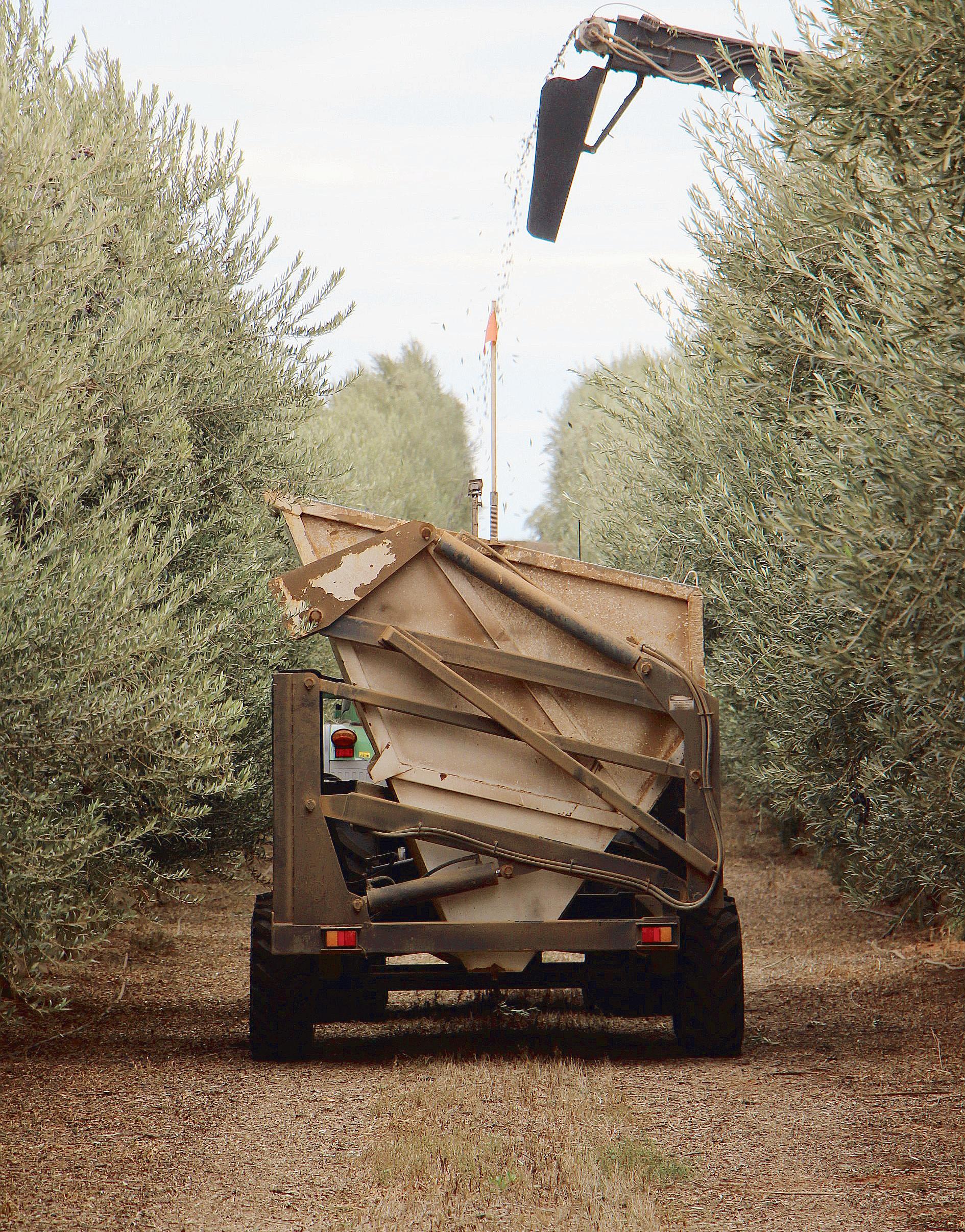
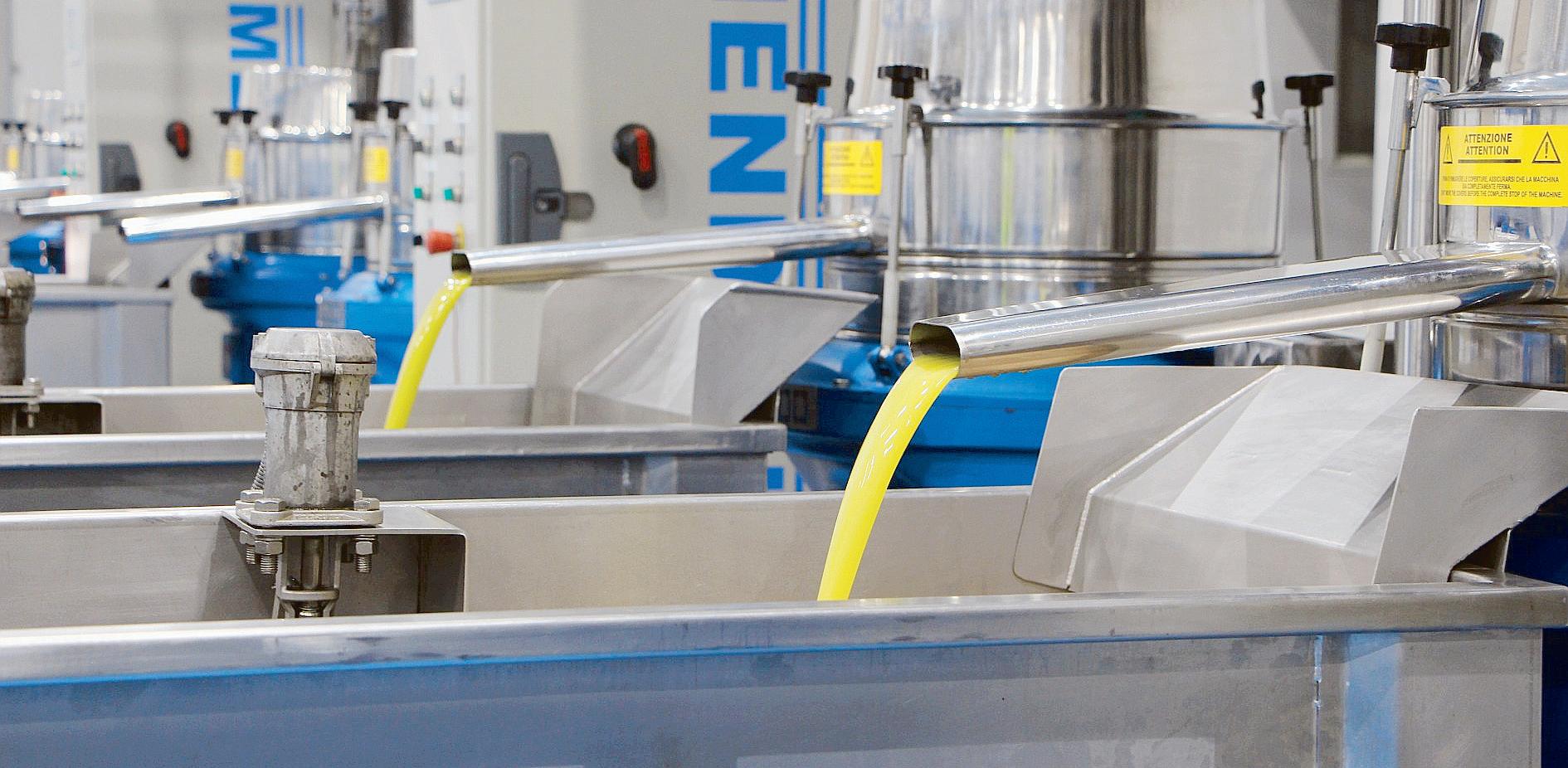

































with Matt Rowlands
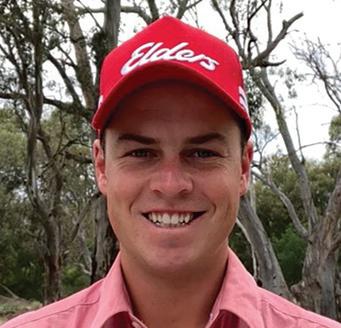
ELDERS’ annual spring store sheep sale at Wycheproof delivered one of its strongest results in years, with more than 10,000 sheep yarded on 31 October and what many described as the biggest buying crowd in more than a decade.
Elders livestock specialist Matt Rowlands said the sale showcased the depth of quality in this year’s vendor lines, with breeders presenting some of the best sheep seen this spring.
“We saw a fantastic quality lineup of breeders come to the sale,” Mr Rowlands said.
“It really was one of the best presented yardings of store sheep for the spring.”
The sale included a large offering of first cross young ewes, one-and-a-half-year-old Merino ewes, mature age Merino ewes and an exceptional run of Merino wether lambs.
Mr Rowlands said most sheep were in ideal condition for immediate joining.
“They were all in very good condition, suitable for joining straight away,” he said.
“Vendors were well and truly rewarded.”
Rain just before the sale helped create perfect yard conditions and lifted buyer sentiment.
“We saw somewhere between 10 and 12 millimetres of rainfall on the night and the morning of the sale,” Mr Rowlands said.
“It presented the yards in great condition with no dust, and that rain had given people a lot of confidence to buy ewes to join.”
The strong seasonal outlook and presentation quality helped attract what several long-time attendees considered a record crowd.
“Some comments were that it was the biggest crowd in probably 15 years,” Mr Rowlands said.
“Lines were full and there were plenty of buyers looking to purchase store sheep.”
First cross young ewes set the pace at the top end, reaching $416.
One-and-a-half-year-old crossbred ewes sold from $370 to $416.
Merino ewes also met strong inquiry, with oneand-a-half-year-old breeders topping at $332, and the majority of good joining types selling between $270 and $332.
Lighter second drafts made from $230 to $265.
Merino wether lambs, all 2025 drop, sold from $162 to $216, with the top run reaching $216. Hazelwood Nominees achieved the top wether lamb price with their April to May drop line. Individual vendor highlights included 220 Border Leicester cross Merino ewes from Jenames of Birchip, which sold for $416.
‘School Paddock’ 4049 Mallee Highway, Manangatang 231.88Ha/572.97Ac *

The store sale was a big success last month.
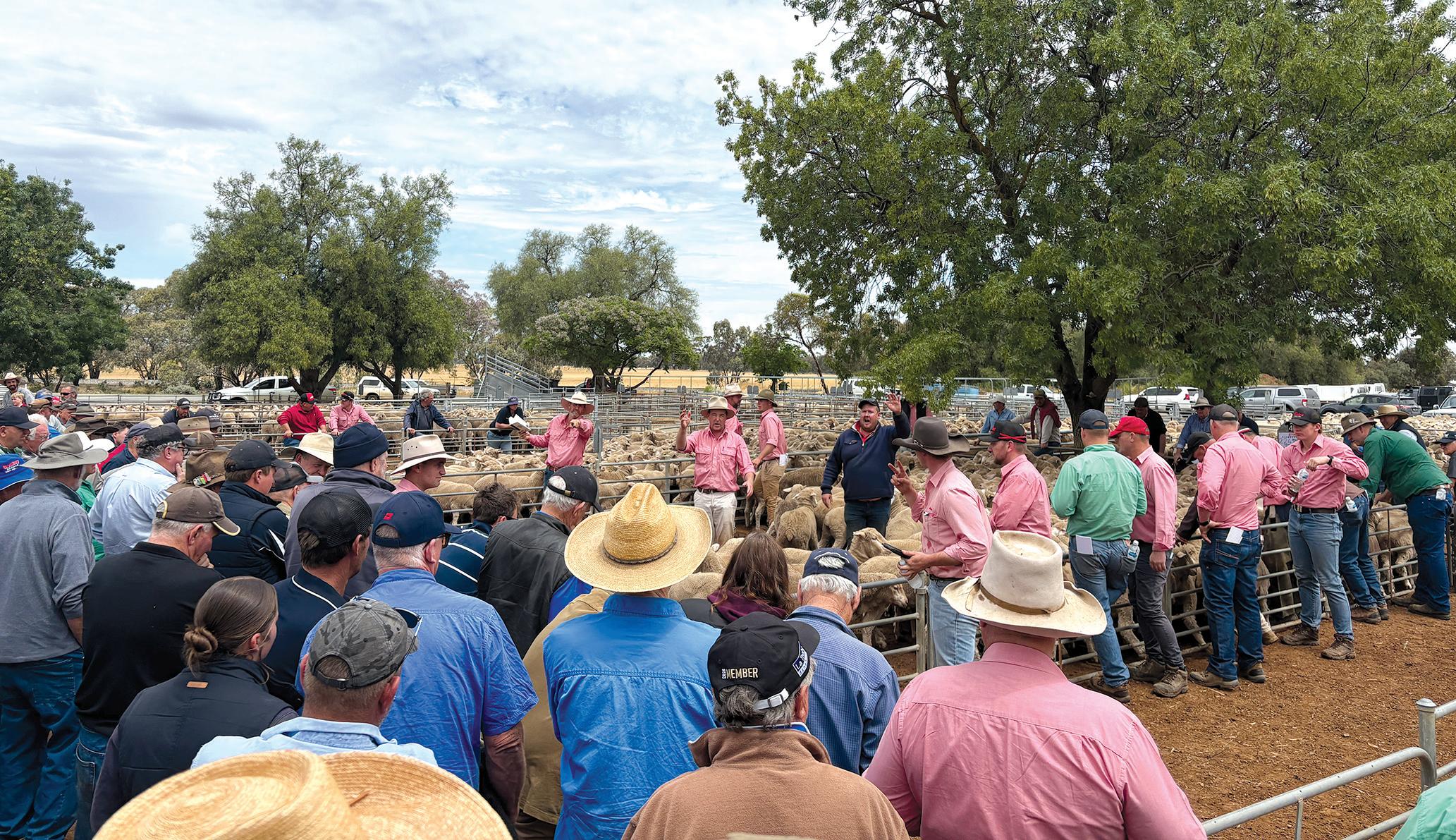
Tamaleuca of Ouyen received $320 for their one-and-a-half-year-old Merino ewes. Ettershank Pastoral sold similar ewes for $316, and IC and KL Gibson achieved $292 for their one-and-a-halfyear - old Merino ewes.
Mr Rowlands said the sale drew strong buying activity from across Victoria.
“We saw a bulk of the sheep heading to the southwest of Victoria, as well as into the eastern parts of the state,” he said.
“People have feed after the rain, and a lot of these sheep will have rams go straight in.”
He said the result demonstrated the strength of the Wycheproof sale and the value of in-person marketing.
“It really shows the importance of having sheep marketed correctly,” Mr Rowlands said.
“Even in times of high prices and good demand, giving vendors that exposure through a well-run store sale makes a big difference.”
Mr Rowlands said buyers continue to value the opportunity to physically inspect sheep rather than relying solely on online listings.
“People want to have a good look through the sheep before they buy,” he said.
“They want to touch and feel, talk to the vendors and really understand what they are investing in. It gives them confidence and avoids
• Situated on the edge of town of Manangatang with Mallee Highway Frontage.
• Undulating Mallee Sandy Loam and Red Loam soils.
• Secure Stock and Domestic from the Grampian Wimmera Mallee Pipeline System.
‘Home Block’ 5839 Robinvale-Sea Lake Road, Manangatang 267.7Ha/661.48Ac*
• Situated 4kms south of Manangatang off the sealed Robinvale - Sea Lake Road.
• Timber cladding home, Machinery shed. Small livestock Holding paddocks.
• Red & Red-grey loam soils.
• Secure Stock and Domestic from the Grampian Wimmera Mallee Pipeline System.
Terms: 10% deposit on signing of contract. Settlement 60 days. *approx eldersre.com.au
Elders Swan Hill 03 5036 0100
Matt Rowlands 0447 818 304
Peter Robertson 0417 636 348
the disappointment of getting stock home and finding they are not what they expected.”
Mr Rowlands said Wycheproof’s central position and long history made it an ideal location for the sale.
“It has a long standing history of holding these spring store sales,” he said.
“Its central location is a benefit to marketing. Sheep come from north, east, south and west within 150 to 200 kilometres. For decades it has been a marked date on the calendar.”
He said the sale remained one of the last special store sheep sales of its type in Victoria.
“It is one of the longest standing and one of the only left,” Mr Rowlands said.
“It is a fantastic asset to Elders and we put a lot of effort into marketing the sheep to give vendors the best exposure.”
Elders is now preparing for its next special store sale on Friday, 28 November, where about 8000 quality Merino ewes and Merino wether lambs were already booked.
Mr Rowlands welcomed more entries.
“There is still an invitation for entries,” he said.
“If producers want to have their livestock marketed this way for great results, they can contact their local Elders agent.”
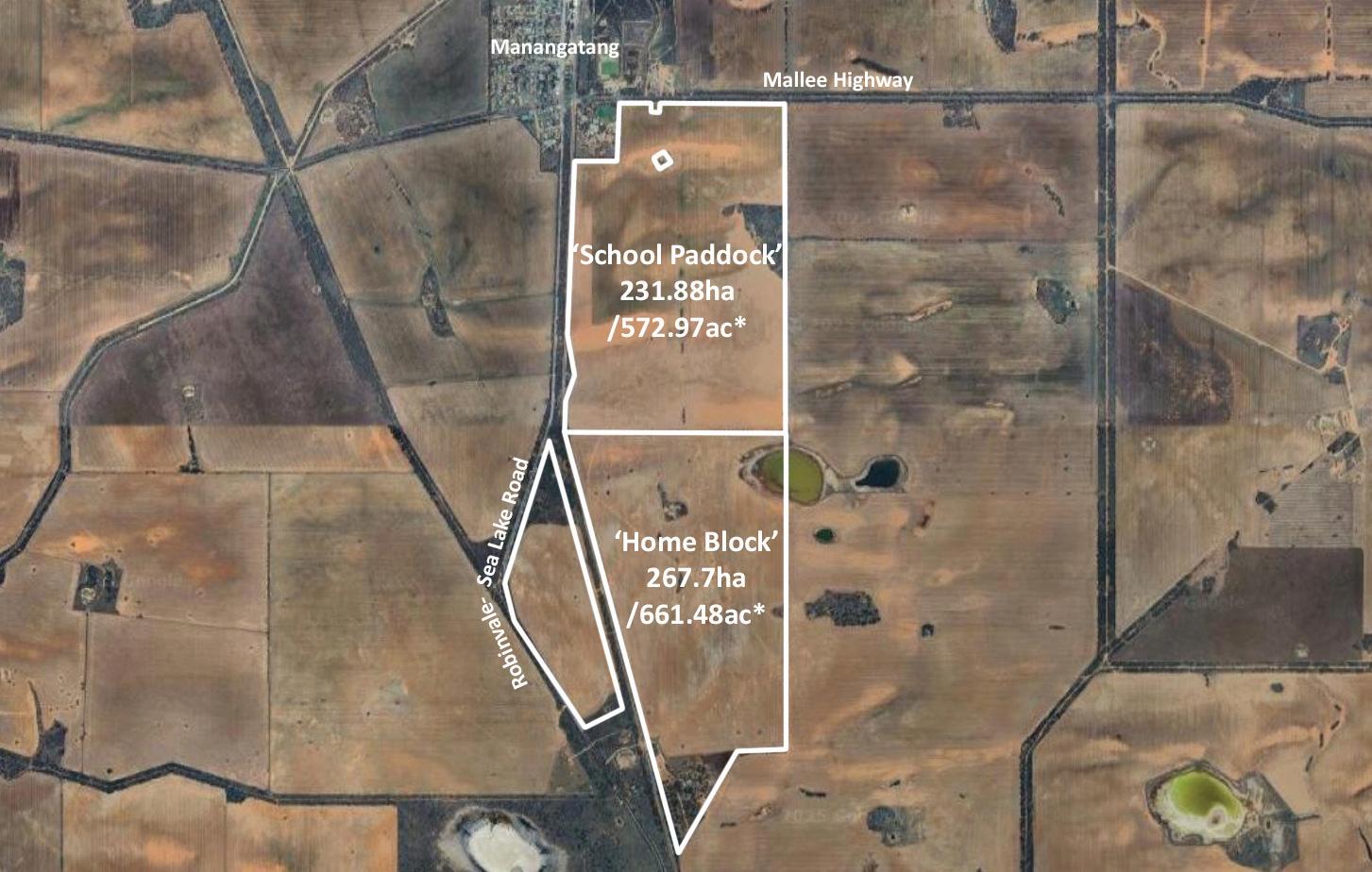
farmers not to take chances.
A RUN of booming haystack and shed fires across regional Victoria has sparked fresh warnings for farmers as hay season rolls into full swing.
Fire crews in the west and north west have spent the past week racing from one smoking paddock to the next.
Thousands of bales have already gone up in flames and authorities say the danger period is only just beginning across the rest of the state.
The call for caution comes after three major fires ripped through the north west.
On 9 November, CFA crews were called to Towaninny South, near Dumosa, about 1pm to find a huge hay shed roaring with fire.
More than 1000 bales were already burning.
Firefighters handed the scene back to the landowner within hours but the smouldering mass was expected to burn for days, sending smoke drifting across the district.
Crews have also a ended four other big hay fires in recent weeks in Patchewollock, Robinvale and Bagshot.
Between 30 June, 2024 and 1 July, 2025, the CFA has responded to 73 haystack and shed fires in regional areas.
Spontaneous combustion is the usual culprit. Hay baled with too much moisture begins to heat internally. The tightly packed bales trap that heat until they eventually ignite.
CFA chief officer Jason Heffernan urged
“Farmers who have decided to carry on with hay production need to be extra vigilant this year to make sure conditions are right for making hay and for the future storage and transport of the product as well,” he said.
“Hay fires are a real threat to properties and stock in farmland areas. Whether you are a seasoned hay grower or switching to hay this year, it is important to take care of your hay and crops this fire season.
“Use technology to monitor your haystacks regularly. Temperature probes can provide an early warning and alert you to heating hay.
“Haystack fires can have far reaching effects beyond individual properties, impacting neighbouring farms and emergency services.
“Make sure you store your hay in separate stacks or in sheds away from farm equipment and other buildings to prevent the spread of fire.”
Farmers wanting more information can visit the CFA website or contact their local brigade for advice on keeping their hay safe.



PREMIUM CARWARP CROPPING & FARMING AGGREGATION 1,985*ha. (4,906*ac.)
‘Moyall’ is a well presented premium broadacre cropping and farming aggregation located in the highly desirable Carwarp district.
Total freehold land area of 1,985*ha. (4,906*ac.), 1,876*ha. (4,636*ac.) being arable.
one line or as three contingent property assets
1. ‘Moyall North’ 950*ha (2,347*ac.) 1930’s circa homestead renovated and extended. Supporting infrastructure include multiple machinery sheds / workshops, grain/fertiliser storage comprising 8 x silos (490t capacity), shearing shed, sheep yards.
2. Moyall South’ 777*ha. (1,921*ac.). No structural improvements.
3. ‘Yatpool’ 258*ha. (638*ac.). Dryland farming earmarked for future irrigation development opportunities.
Strategically located with proximity to grain receival centers and agricultural
‘Moyall’ has supported best farming and agronomic practices, complimenting the with rises tendering in east/west direction.
Average annual district rainfall 280*mm to 290*mm.
An extremely impressive agricultural farming asset established to its best
Information memorandum available.
EXPRESSION OF INTEREST: Closing 5th December
INSPECTION: By appointment
CONTACT: Michael Fernandez - 0429 165 077
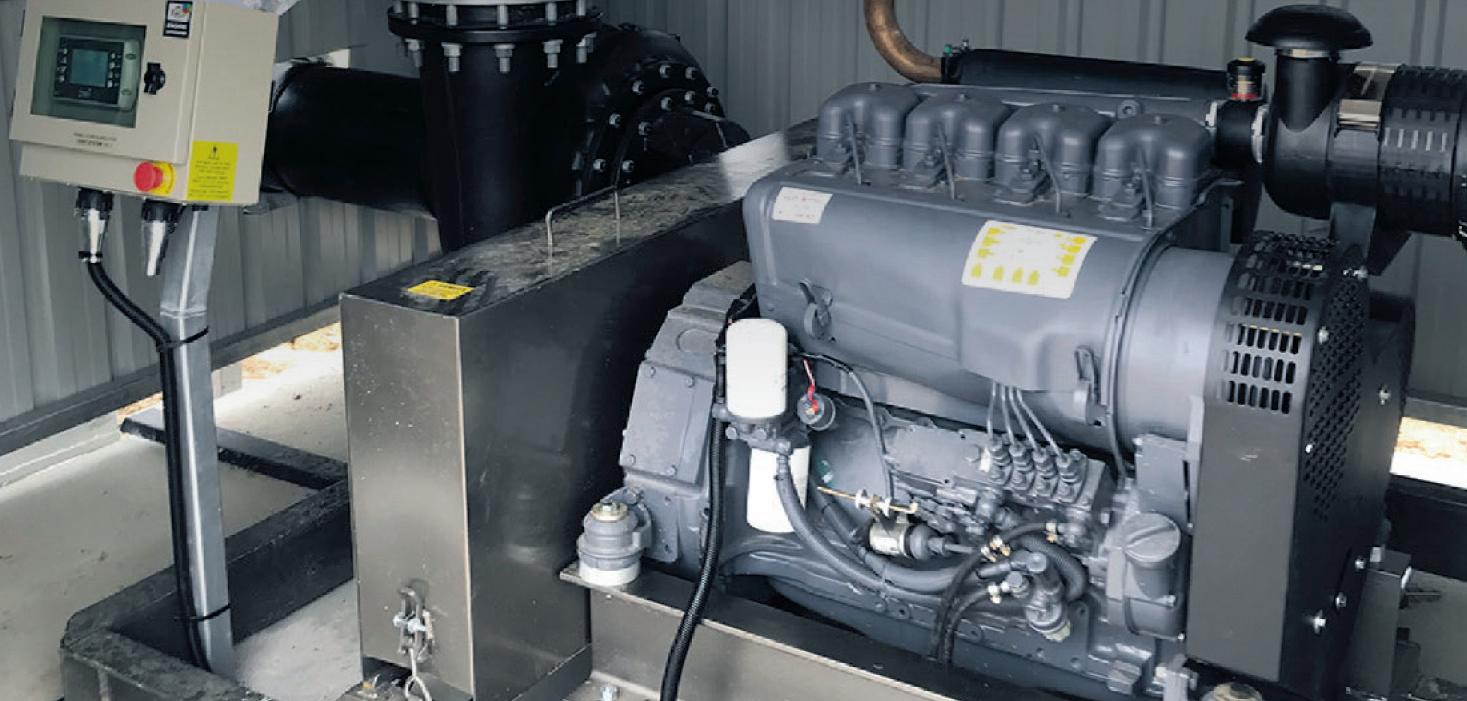

•
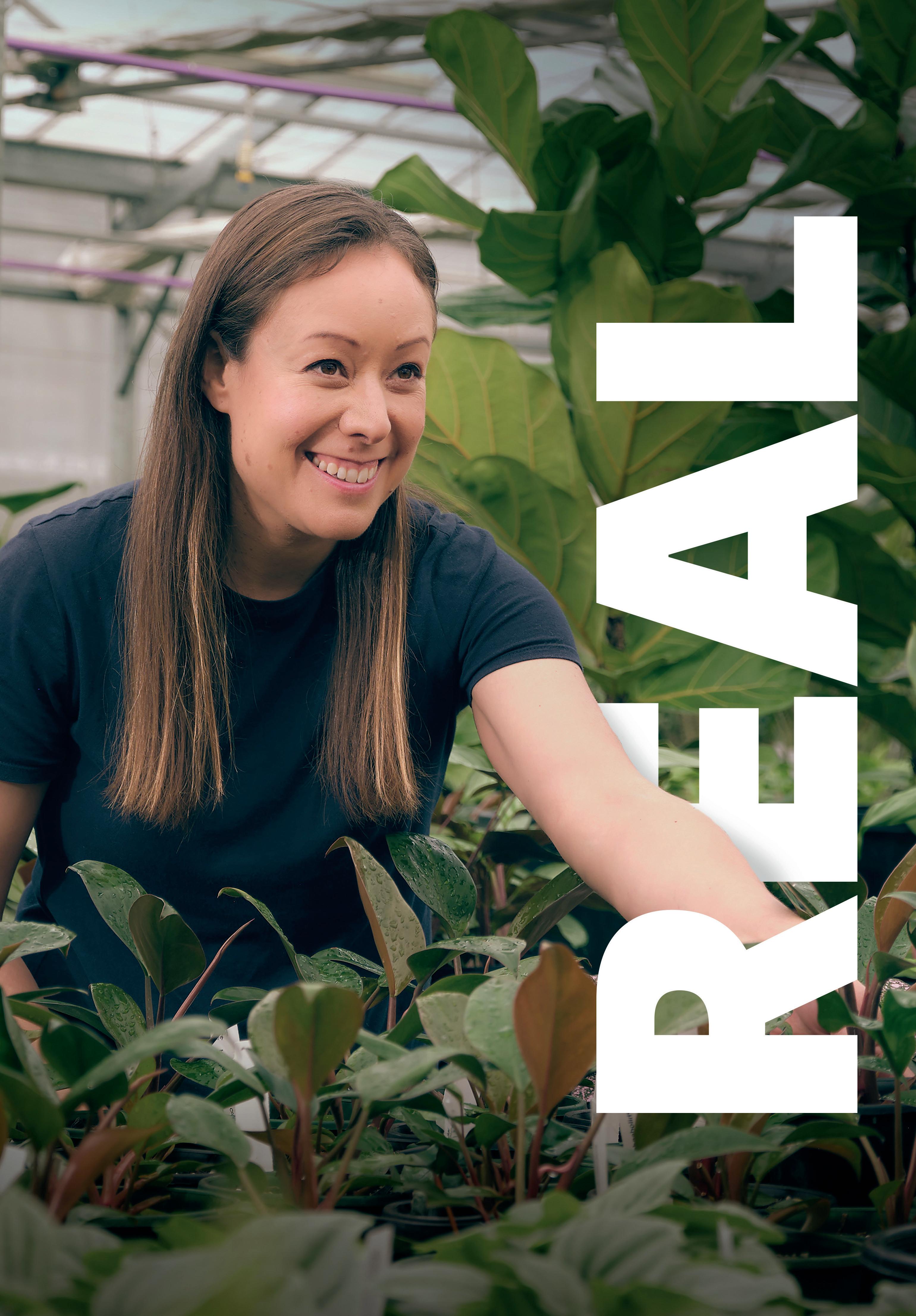


Peter Bannan
FOR Jeremy Watson of Ormonde Farms, this year’s harvest is shaping up far be er than many dared hope.
Running one of the larger diversified operations inthedistrict,MrWatsondescribesthe2025season as “above average” and one that has delivered both relief and optimism after several tough years.
The broadacre, dryland enterprise is sowing barley, wheat, lentils and field peas this year.
With harvest just beginning, barley is the first cab off the rank and early signs are strong.
“It’s going pre y well, a lot be er than some people before us,” Mr Watson said.
“We’re in a good li le pocket over here south of Berriwillock. Hopefully our average will be over four tonnes.”
Recent rain has been a mixed blessing, slowing progress but boosting crop finish.
“It slowed us down. It’s been hard to get a run at
things,” Mr Watson told NorthWestFarmer
“But if the grain upsets the hay, that does not worry me at all. The rain helped finish the wheat
off
“Another inch would have made it phenomenal, but we are blessed where we are.”
Frost, the usual wildcard in the Mallee, has caused li le harm this season.
“We have managed to duck and weave through them. I have not seen much frost damage. Unlike our lentils last year, which were a complete wipeout. We took in 250 tonnes instead of the 1500 to 1800 we were expecting,” Mr Watson said.
The turnaround in lentils is dramatic.
“This year they are averaging about a tonne to a tonne and a half. For the rain we have had, I could not be happier,” he said.
Challenges still loom. The biggest at the moment is juggling hay and harvest with weather interruptions.
“We have one paddock that has been a pain. But
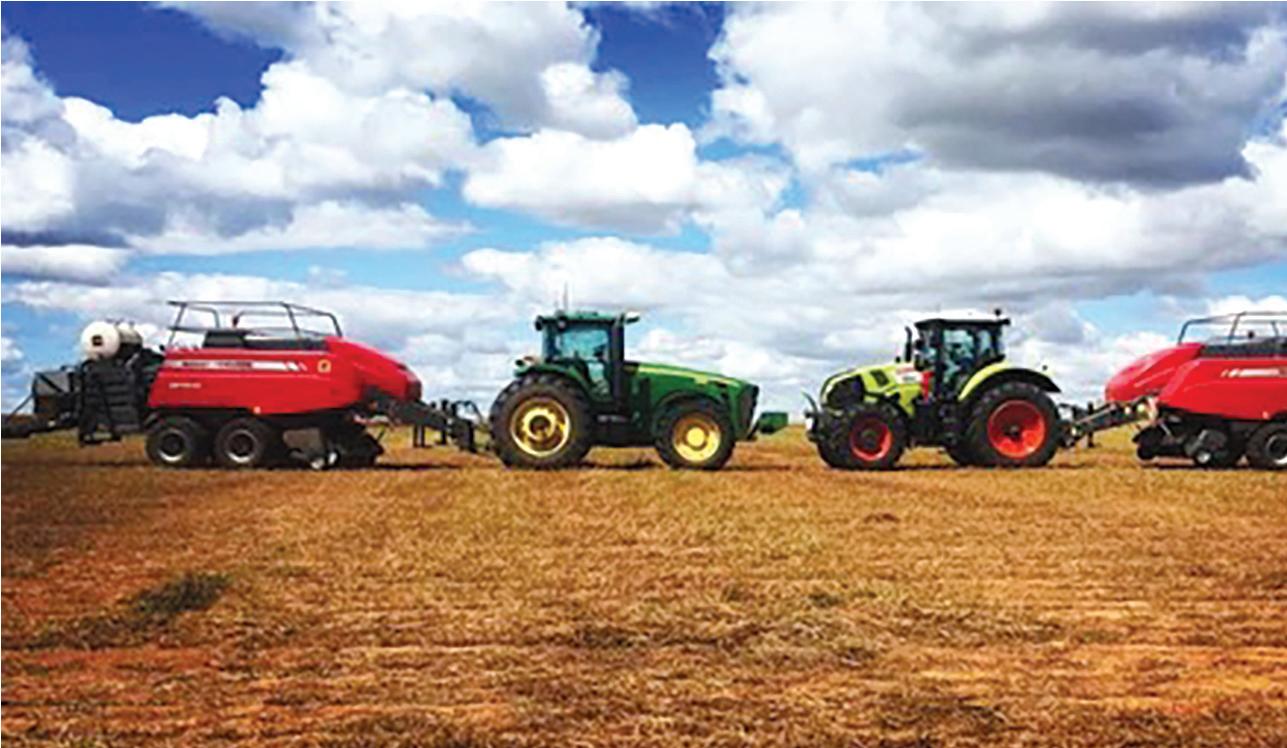

we have enough workforce to keep going. Come evening meals we have about 11 or 12 people here,” he said.
Pricing and rising costs remain front of mind.
“Prices are back but yields are up. Per hectare we are still si ing pre y well. But costs are huge,” Mr Watson said.
“Put two tyres on a chaser bin tractor and there is $7000 gone. Even in a good season there will not be massive reserves with the costs we carry.”
Fire risk also weighs heavily.
Mr Watson is an active CFA member and has already a ended several harvest fires this season.
“It is always a concern. We are lucky with the aerial support and CFA resources here,” he said.
“But insurance is tricky. Do you insure for full potential and run costs up, or for an average? Fires and hail are always in the back of your mind.”
Mr Watson is a fifth-generation Mallee farmer and says community is as important as crops.
“We are doing pre y well, but we know others

will not have the harvest they hoped for,” he said.
“We have all got to get around everyone. Keep your community spirit alive. That is our mo o over here.”
GrainCorp reports that southern NSW is now fully underway, with canola flowing into the most southern and eastern sites and wheat receivals building across northern and western districts. Cooler conditions caused some delays last week, but a lift in activity is expected as temperatures rise.
In Victoria, wet and cooler weather again slowed progress,withmostactioncentredinthenorthern Mallee, Swan Hill and north-east regions. Harvest is expected to ramp up in the coming weeks as conditions dry.
GrainCorp encouraged growers to stay in close contact with their local site managers for updates on deliveries and segregations.
Grain receivals at GrainCorp up-country sites, as at 17 November, was 180,600 tonnes in Victoria.
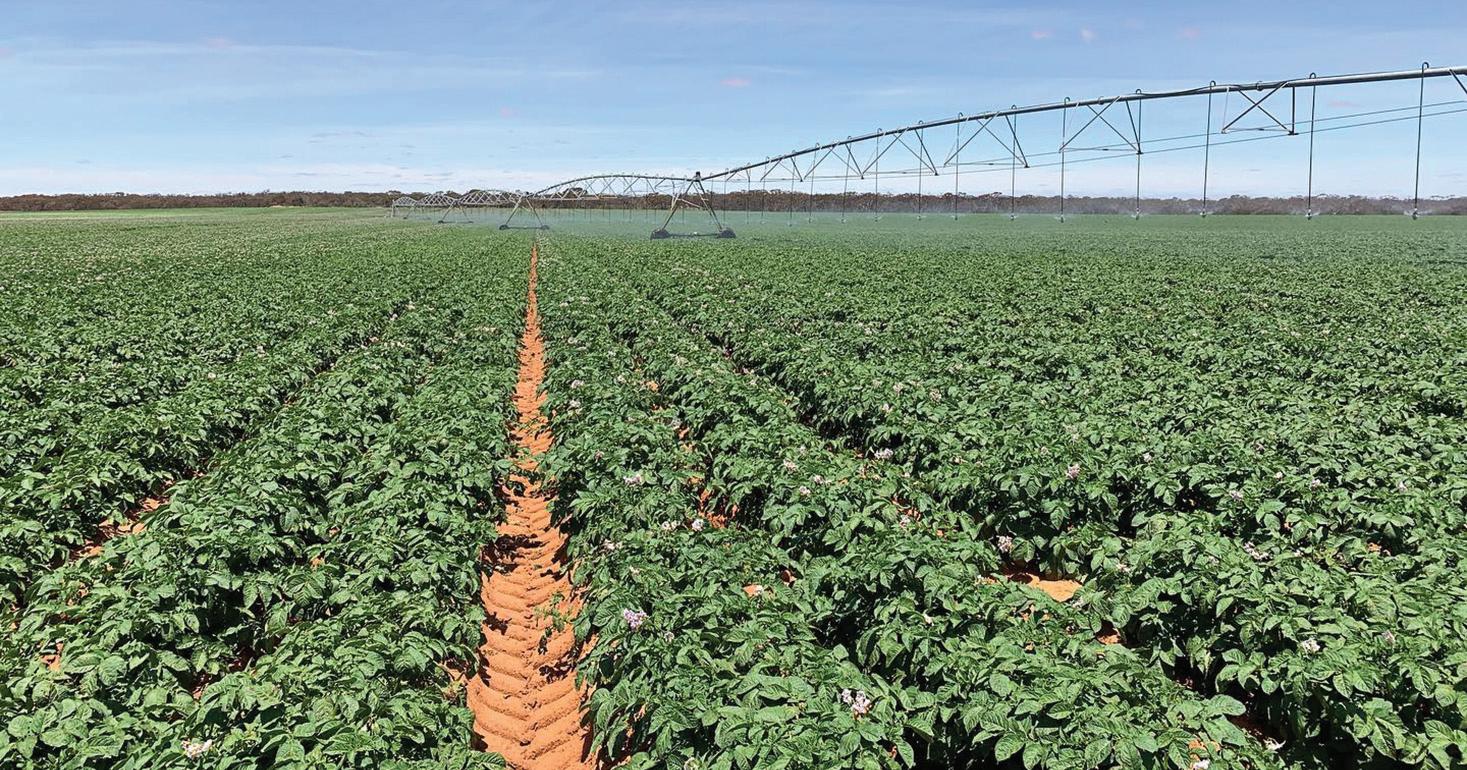
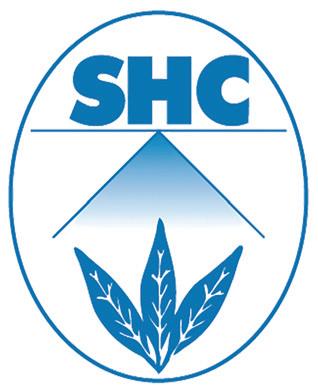

Peter Bannan
SELECT Harvests Limited has released its 2025 business update, reporting a final almond crop estimate of 24,700 tonnes, slightly below the midpoint of its earlier forecast.
The company says the crop has now been fully processedatitsCarinaWestfacility,nearRobinvale.
Despite a lower-than-expected crop size, the company’s average almond price is tracking at $10.14 to $10.20 per kilogram, marginally below the midyear forecast.
Global almond prices are recovering after a dip earlier in the year, with analysts pointing to a smaller marketable crop in the United States and ongoing structural changes, including reduced new plantings and older orchard removals, as positive for prices in the coming 12 months.
Select Harvests has also highlighted its strong financial position.
Net debt has been reduced to $80 million, with gearing at 15 per cent, representing a 50 per cent reduction from the previous year.
Operational costs have been tightly managed, with production costs held flat, despite ongoing investment in horticultural programs.
Looking ahead, the company’s 2026 almond bloom has been completed with positive results.
Bloom began slightly later than in previous seasons but was generally strong across most orchards.
While New South Wales experienced weaker bloom due to the effects of consecutive wet years, improvements were recorded at the Mountview and Belvedere orchards.
No frost damage has been recorded, and the


company is implementing an increased fertiliser program to support crop development during the next two years.
Managing director and chief executive David Surveyor said agriculture remained inherently variable.
He noted that while this year’s crop was below expectations, the company has become more efficient and resilient.
“We have been pleased to see the recovery in almond prices as the size of the US crop becomes clearer,” he said.
“The macro-economic environment for almonds remains positive and is expected to continue in coming years.
“We remain commi ed to growing, processing and selling as efficiently as possible for the benefit of our shareholders.”
Denika Anderson
THE newest release from Masterchef contestant and host Poh Ling Yeow is a collection of recipes inspired by the Australian almond.
AnambassadorforAustralianAlmonds,MsYeow said she loved working on the cookbook.
“Itwasaverypersonalproject,weshottheentire book at my house using existing surfaces, and all my op-shopped crockery,” she said.
“I really enjoy being hands-on, when I’m on set I like to cook everything as well as style the food, and even in post at the design stage, it’s really important to me that people feel the recipes have entirely come from me.”
AlmondBoardof Australiachief executiveofficer
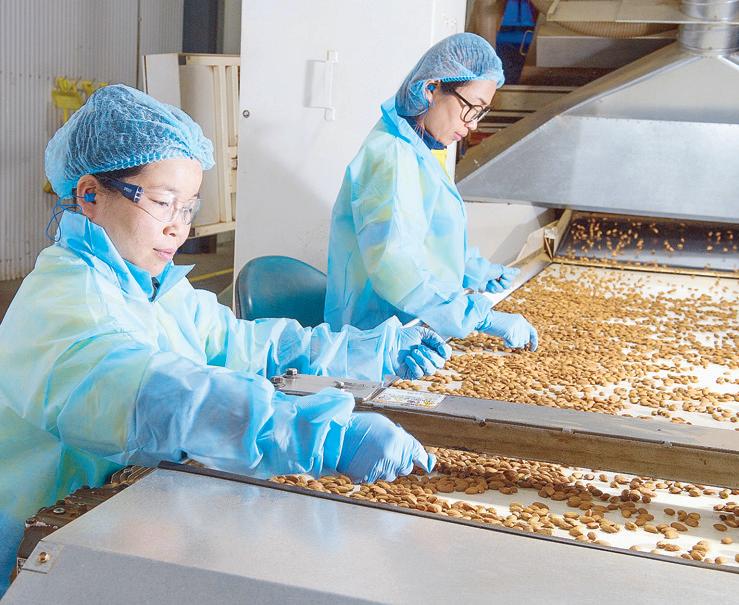
Tim Jackson said Ms Yeow has been a wonderful ambassador for Aussie almonds.
“PohiswellrecognisedinAustraliaandoverseas, she’sdoingafantasticjobhelpingtodrivedemand for our almonds domestically, and in key export markets,” he said.
Therecipescoverkitchenstaplessuchasalmond milk and bu er, to dishes including kung pao chicken, and basil pesto, to desserts such as Persian love cake, and bread and bu er pudding.
“It’sexcitingtobeabletoshowcasetheversatility of almonds and to use them with such ease across so many cultures,” Ms Yeow said.
“I really focused on making the recipes accessible,mindfultouseeasy-to-findingredients and uncomplicated methods.
“I’ve been writing recipes for 16 years now, and it’s taken me all this time to realise that doing less and creating undeniable flavour are the most important things, people have to feel the recipes are doable, and no ma er what, it has to be delicious.”
A free copy of Crunch: Recipes for Every Day with Poh Ling Yeow and Australian Almonds can be found at australianalmonds.com.au.
versatile range of trailing spreaders for all types of granular fertilizers and seeds as well as heavy rates of gypsum,
models available including narrow-track orchard model with side spread option

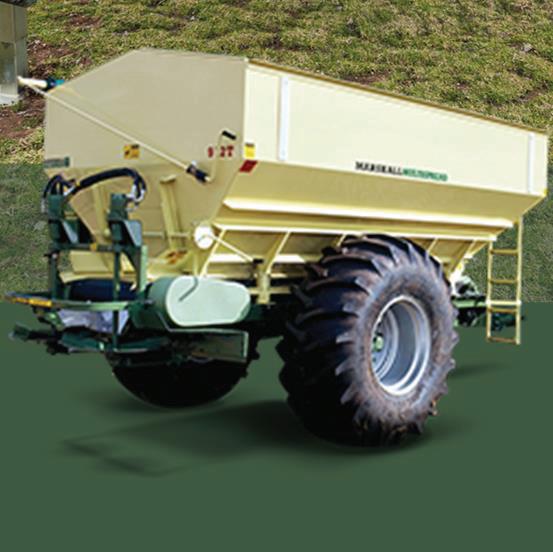


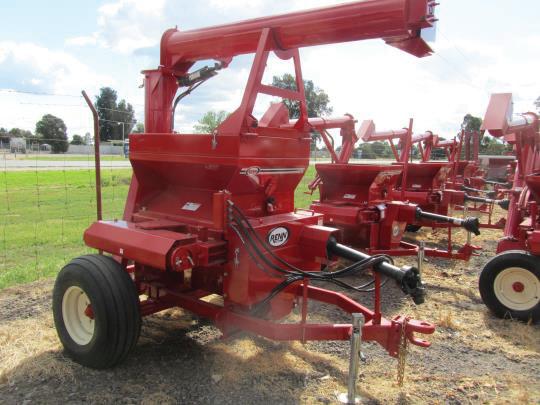
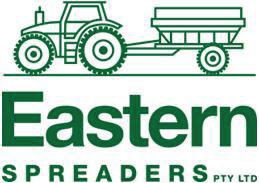
and Workshop Service and Repairs available -














INFORMATION SESSION: FRIDAY 28 NOVEMBER 2025
AUTHORISATION MEETING: SATURDAY 29 NOVEMBER 2025
(Decision-making meeting)
TIME: 9am - 4pm (registration from 8:30am).
WHERE: The Grain Shed Church, 2-8 King Street, Swan Hill, VIC 3585.
What is this meeting about?
The purpose of the meeting is to make decisions about authorising a native title claim within the area bordered in blue on the map shown below (the Native Title Claim Area):
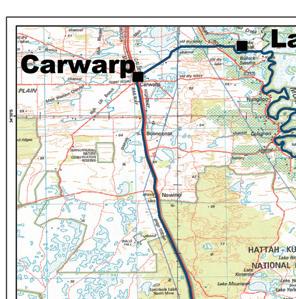
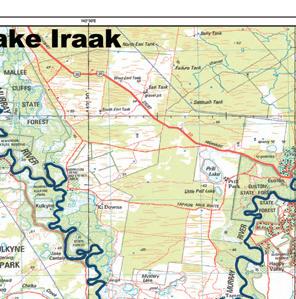
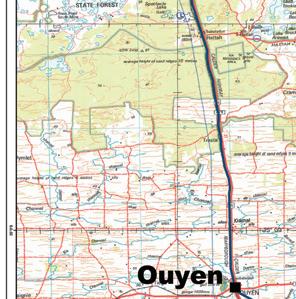


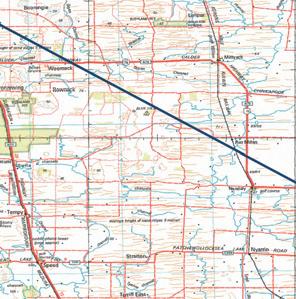

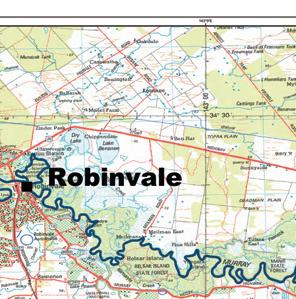
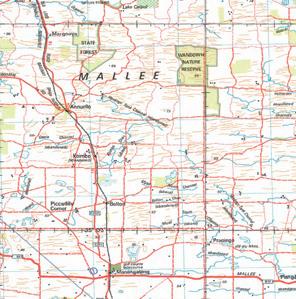


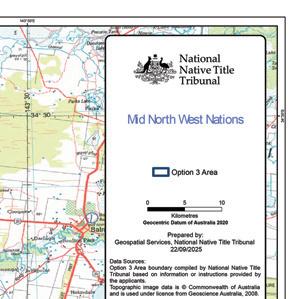


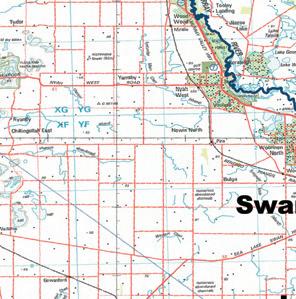
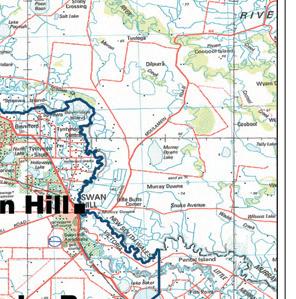

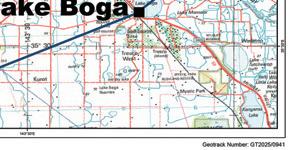
The Native Title Claim Area is in Victoria only and bounded by towns including Robinvale, Lake Iraak, Carwarp, Ouyen, Sea Lake, Meatian, Lake Boga, Swan Hill.
Who should attend?
The Authorisation Meeting is open to all descendants of the following ancestors (in A-Z order):
1. Annie Hamilton (nee. Johnson) (c. 1855 – 1934)
2. Caroline Farrant/Farrell/Fennel (nee. Williams) (c. 1861 – 1939)
3. Henry ‘Ted’ Edwards (c.1860s – 1949)
4. John Mack ‘Djelwara/Telwara’ (c.1838 – 1918)
5. ’Belay’/Kitty (dates unknown)
6. Louis Walters (dates unknown)
7. Louise Yanga (dates unknown)
8. Sarah Perry (c. 1869 – unknown)
9. Reginald Wise (1862 – 1934)
10. Robert Peters c.1861-1937
11. Sarah Mayne/Moore (dates unknown)
12. Savina Firebrace (nee. Wise) (c. 1858 – 1903)
13. Thomas Ivanhoe (c. 1825 – 1909)
14. Thomas Pearce (c.1869 – 1961)
15. Thomas Randall (c. 1836 – 1896) and Sarah Randall (c. 1849 – 1916)
If you are not a descendant of the above named individuals, but assert native title rights and interests in relation to the Native Title Claim Area, or if you have any queries about whether you are a person who should attend this meeting please contact Toby Kirby, Senior Community Liaison Officer on 0434 632 875 or at tobylee.kirby@fnlrs.com.au and attend the meeting.
Purpose of Information meeting:
The purpose of this meeting is to consider and discuss information and legal advice about the decisions to be made at the authorisation meeting on Saturday 29 November 2025.
Purpose of Authorisation meeting:
The purpose of this meeting is to consider, and make decisions about the following:
1. Discuss and confirm the process of decision making for decisions to be made at the meeting.
2. Consider and authorise (agree to) who is the native title claim group.
3. Consider and authorise (agree to) a native title claim on behalf of the native title claim group, over the lands and waters, within the Native Title Claim Area.
4. Authorise one or more members of the native title claim group to make the native title claim application, and to deal with matters arising in relation to it (the Applicant).
5. To decide if the above native title decisions should also apply to satisfy the Minimum Standards for a Local Traditional Owner Treaty and enable the proposed claim group to be entered on the Negotiations Register.
Attendance and Travel Assistance:
• For travel assistance or to confirm attendance, please contact Toby Kirby, Senior Community Liaison Officer on 0434 632 875 or at tobylee.kirby@fnlrs.com.au by Thursday 20 November 2025. Travel assistance will be provided by FNLRS in accordance with our Travel Assistance Policy available on our website.
• Attending remotely: The Mid North West Nations group have expressed a preference for people to attend meetings in person and attendance in person isencouraged. However, if you are unable to attend in person, and would like FNLRS to arrange for you to attend the meeting remotely by videoconference, please email or call email or call FNLRS at info@fnlrs.com.au or (03) 9321 5300 by Thursday 20 November 2025 to register your attendance. Once you have registered, FNLRS will send out details of how to attend the meeting by videoconference.
If you have any questions, or simply require further information, please contact Toby Kirby, Senior Community Liaison Officer on 0434 632 875 or at tobylee.kirby@fnlrs.com.au or Lachlan Buckley, Senior Lawyer on 0437 385 882 or at lachlan.buckley@fnlrs.com.au.

By Almonds Australia chief executive Tim Jackson
THE Australian almond industry actual intake for the 2025 season has been calculated at 155,697 tonnes (kernel weight equivalent).
This is slightly higher than the pre-harvest estimate of 155,531 tonnes issued in February.
However it’s almost 7500 tonnes below last year’s record intake of 163,148 tonnes and almost 10 per cent down on the long-term crop forecast.
Almost 20 per cent of Australia’s almonds are consumed domestically, with the remaining 80 per cent bound for more than 50 countries around the world.
Demand for Australian almonds is the highest it has been in the last decade, which is good news for growers who are grappling with rising input costs.
There’s increased interest from export markets due to trade sanctions from the US and as a result almond importers are looking for alternatives to Californian almonds, where almost 80 per cent of the world’s crop is grown.
China and India are our major export markets, but there’s a strong focus on developing markets in South East Asia.
The ABA marketing team has been working hard to elevate Australian almonds, ensuring that
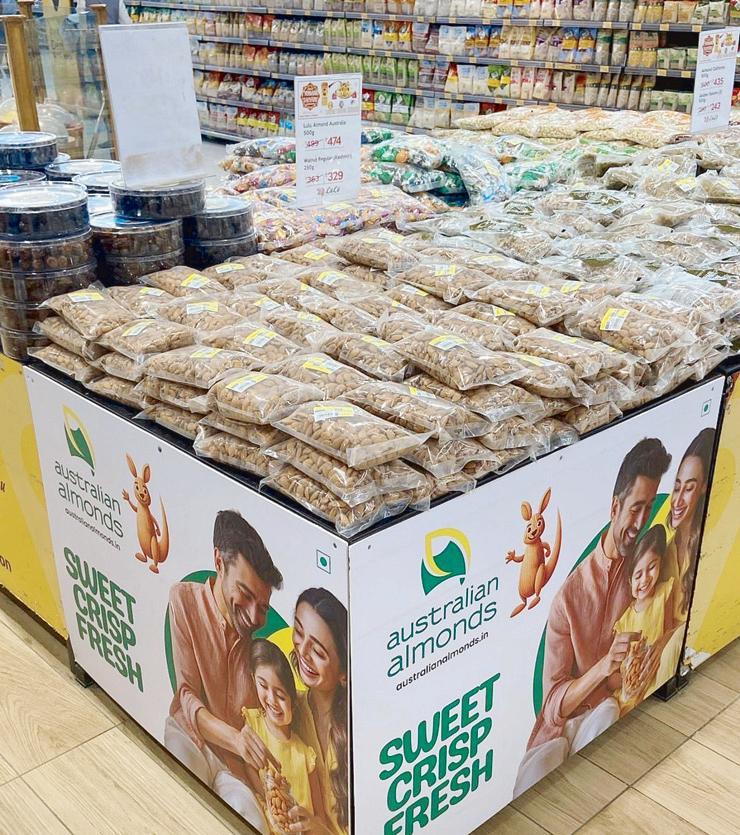
buyers know they are ge ing a premium product. The Australian almond marketing season runs from March to February and so far this year more than 105,638 tonne (kernel weight equivalent) has been sold.
September sales figures were mixed with India well down on last year, but China still growing by four per cent season-to-date on last year. The Indian decline is consistent with Californian almonds export figures for the month and would appear to have been caused by buyer uncertainty, created by the Modi government announcing a 22 September change to the GST rate on almonds. In line with the smaller 2025 crop and reduced availability, Australian sales volumes are down 4.6 per cent on the same seven-month period for 2024. Combined shipments (export and domestic) for September were down 25 per cent on the same month last year - but at 17,761 tonnes, were still the second highest volume sold on record for the month.


Every farming family faces big questions about the future - who takes over, how to retire, and how to keep the farm strong for the next generation.
We help families have those important conversations, guiding you through succession, transition, and retirement planning with practical advice and structured meetings that achieve real results.

Based locally, we understand the realities of farming life and the challenges that come with passing the farm to the next generation.
With over 30 years of combined industry experience, we bring practical knowledge and a down-to-earth approach to help families create plans that work — for both the business and the people behind it.


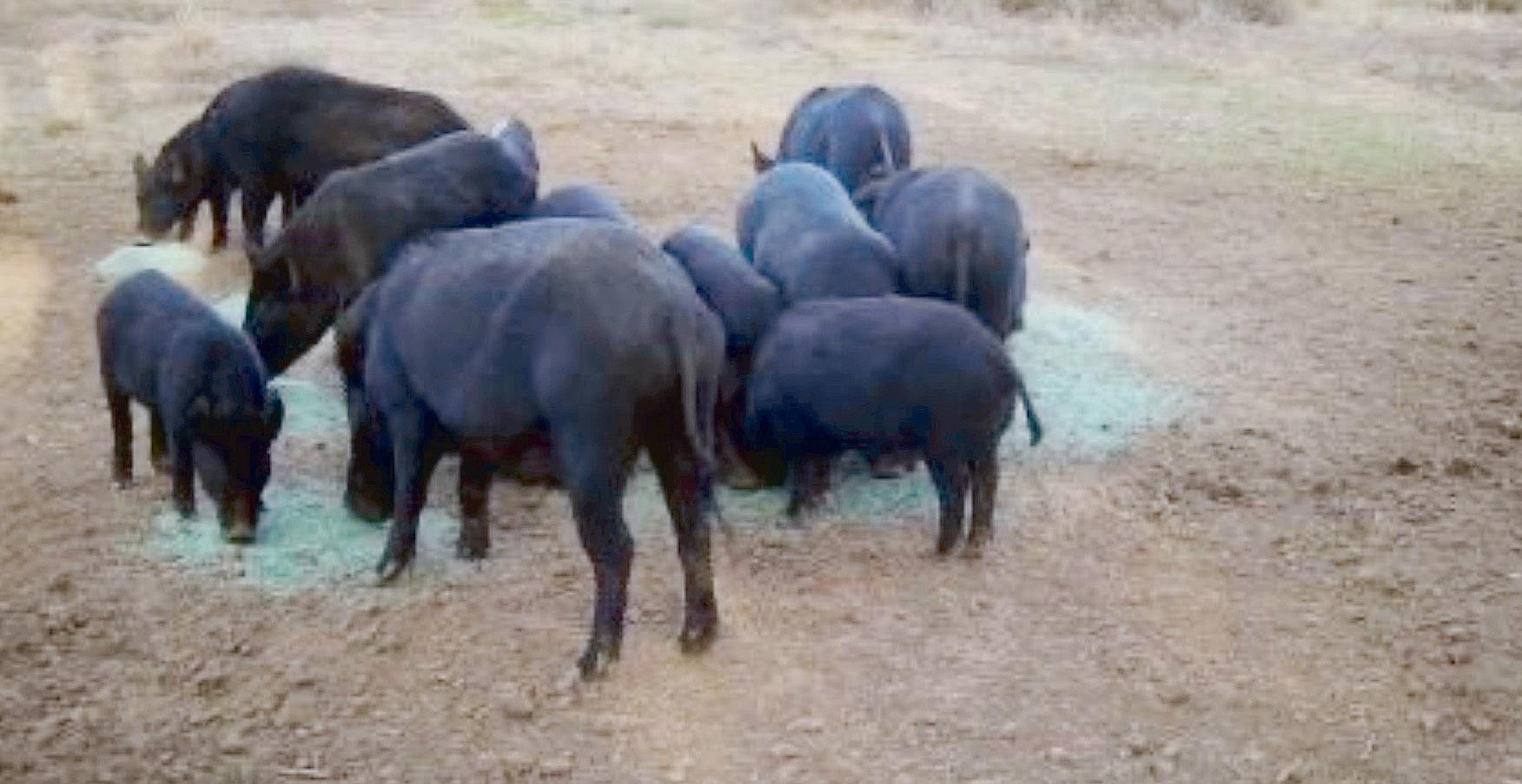
LANDHOLDERS across New South Wales are being urged to take advantage of $850,000 worthof freegrainandbaitaspartof astatewide crackdown on feral pigs.
The support is being delivered through Local Land Services and forms part of the NSW state government’s broader plan to strengthen and build the state’s primary industries sector.
It is the third consecutive year that free grain and bait have been made available to landholders under the Feral Pig and Pest Program, backed by the state’s more than $1 billion biosecurity budget.
Minister for Agriculture and Regional NSW, Tara Moriarty, said the threat posed by feral pigs was significant and growing.
“Feral pigs are wreaking havoc on our landscapes, threatening biodiversity, damaging crops and undermining biosecurity,” Ms Moriarty said.
“With free grain and bait being offered across the state, we’re backing our farmers and regional communities with real, practical support.
Increasing access to baiting and trapping resources gives landholders the tools they need, meaning greater impact on the ground and fewer pigs out there causing damage.”
Since July 2023, the NSW Government has commi ed more than $40 million to initiatives aimed at supporting landholders in controlling feral pig and pest animal populations.

This investment has led to the removal of approximately 223,000 feral pigs and the distribution of more than 475,000 kilograms of bait to landholders.
The cost of grain for trapping and baiting can be significant, but under the current program, these supplies are now available at no cost while stocks last.
Feral pigs are known to damage crops and pastures, prey on livestock, and degrade natural habitats.
On-farm baiting and trapping programs are considered critical to reducing their impact and are most effective when used alongside other control methods such as aerial and ground shooting.
Landholders interested in accessing free grain and bait or seeking tailored advice on pest control options are encouraged to contact their nearest Local Land Services office, operating across 11 regions, including the Riverina, South East and Western regions.
IN theheart of south-western New South Wales, sheep and ca le farmer Colin McCrabb is waging a quiet war against a destructive and elusive enemy -feral pigs.
Operating a 6800-hectare property in Wanganella, Mr McCrabb has seen firsthand the damage these pests can inflict.
“We found pigs causing problems with predation of ewes and lambs, so we were in touch with Local Land Services to see what we could do,” he said.
Since joining the Feral Pig and Pest Program more than two years ago, Mr McCrabb has transformed his approach to pest control.
With support from Local Land Services, he’s implemented a combination of trapping and permanent baiting stations equipped with real-time monitoring.
“Baiting is a great option for us because it’s passive and to be honest I’ve been really surprised by the number of pigs we’ve had,” Mr McCrabb said.
“You don’t think you have any on your property until you set it up and see what is actually going on. We’ve removed hundreds since we started our control program.”
Mr McCrabb said the impact had been significant.
Since 2023, more than 200 feral pigs have been removed from his property, reducing threats to livestock and improving biosecurity.
“The support from Local Land Services is fantastic,” he said.
“My message to others who don’t think they have a pig problem is you will be surprised what you discover once you start looking for them. The predation and damage of pigs is horrendous, plus the biosecurity risks are very real, so we are doing anything we can to put a stop to that.”
LLS Feral Pig coordinator Bec Gray emphasised the importance of a multipronged approach.
“When it comes to feral pigs and pest animal control, unfortunately there’s no silver bullet,” she said.
“That’s why we need to support the use of multiple control methods, such as baiting, trapping and shooting.”
Ms Gray said pigs don’t respect boundaries and urged landholders to work together. “They move across landscapes and cause widespread damage. That’s why we’re encouraging landholders to team up, plan strategically and use the free bait and grain available across all 11 Local Land Services regions.”
“This isn’t just about individual properties, it’s about community-wide action. The more unified the response, the greater the success.”

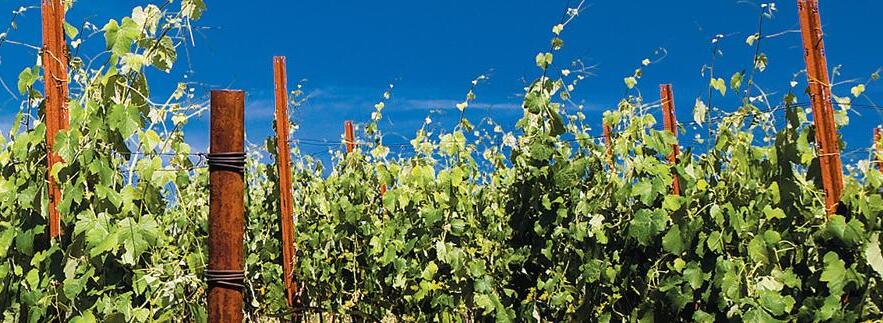
NORMALLY a lower intake of grapes stimulates activity in the marketplace, but it’s currently not the case.
The northern hemisphere countries have recently finished their harvests with none reaching their five-year average production levels.
Italy is looking like it may have harvested their lowest crop since 1961 because of climactic conditions and vineyard removals.
The downturn in production is attracting li le buyer interest, and as we’re seeing here
in Australia, further vineyard removals may be necessary unless alternative uses for our wine grapes are found.
Most wineries here are planning on a lower intake for the 2026 vintage, which will leave a lot of fruit unrequired especially red varieties.
Someregionshadsomefrostdamagelastweek. It was mainly in north east Victoria and parts of South Australia.
Locally, grapevines are flowering and are looking okay.
Disease pressure has been low and water use is up because of the windy weather and li le assistance from the clouds.
To make it a bit more interesting, our pipeline infrastructure here at Tresco requires an overhaul, with it being over 50 years old.
Simply not enough water is being put through the system with increased costs causing more farmers to pull the pin.
For the small number of serious irrigators that remain, it looks bleak.
The small number of remaining irrigators paying for the upgrade of the infrastructure won’t work.
Our water authority has been pu ing minimal effort into the quality of our water and drainage systems, and Tresco and other districts such as Nyah, are being analysed as to their ongoing viability.
On a lighter note, spring has been successful for the creatures with heaps more young pesky crows and starlings about.
Unfortunately, all are involved in flight training and ripe grape identification courses.
The young fruit flies are also given the same course, along with a fruit fly trap avoidance course, with their paperwork being in a much smaller
The young orb spiders don’t get much time to fine tune their web building prowess, with reindeer season only weeks away.
A very well-built web is required to stop them.
Talk to your mates.









































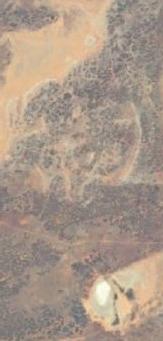
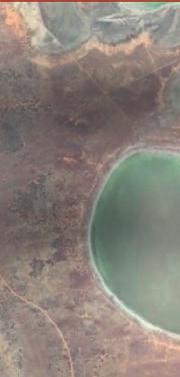

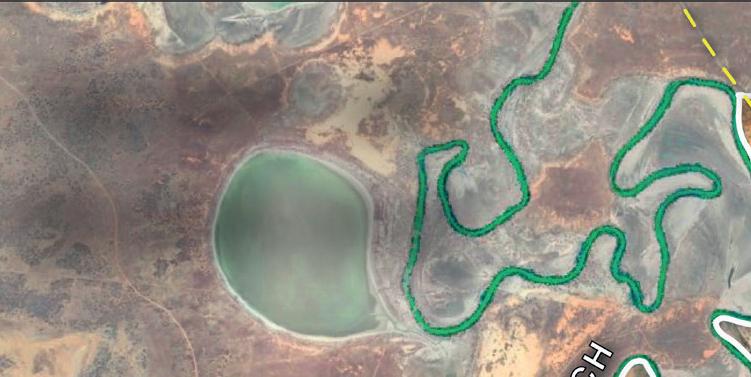

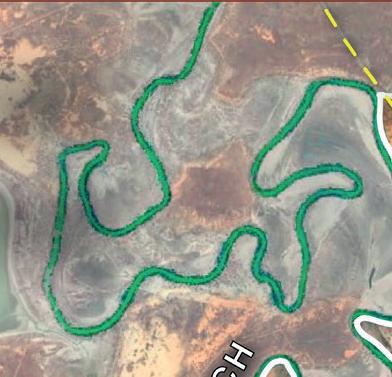




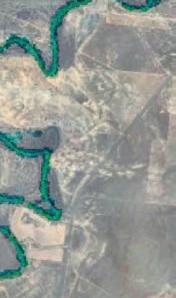
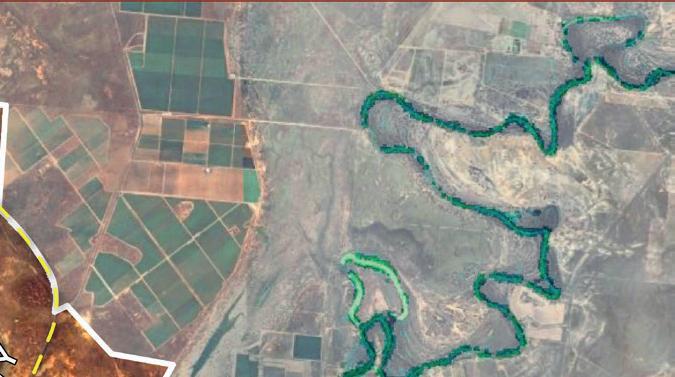

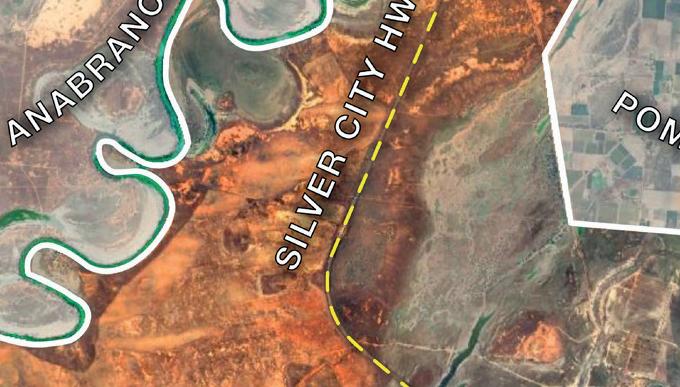


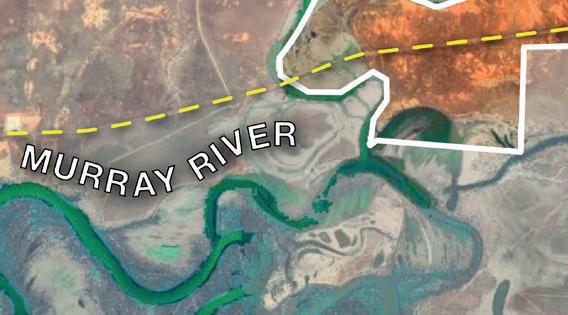

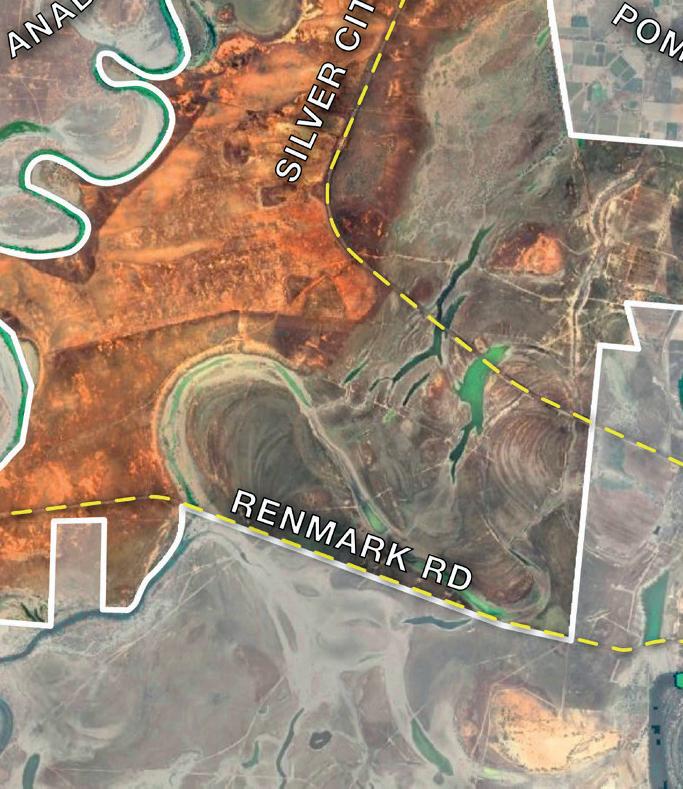








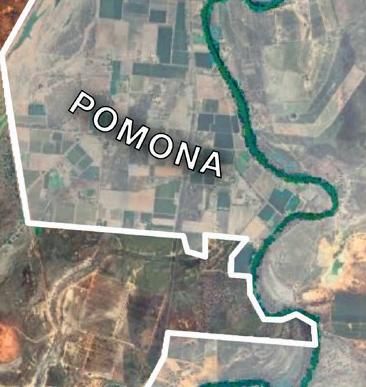

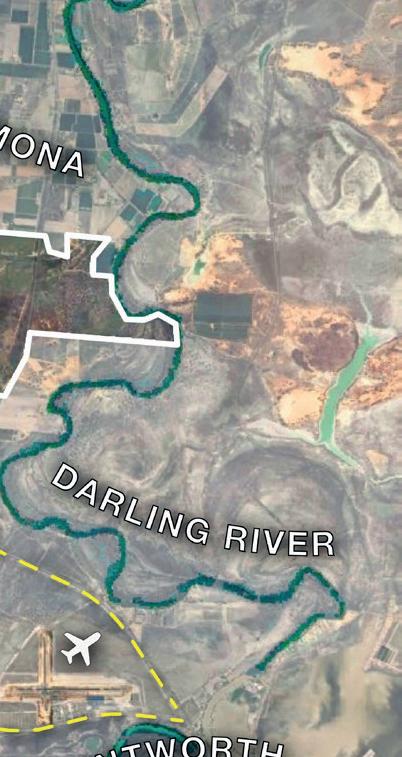

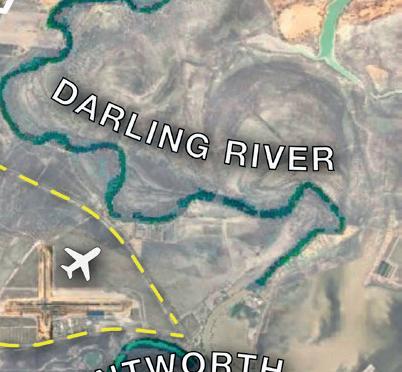

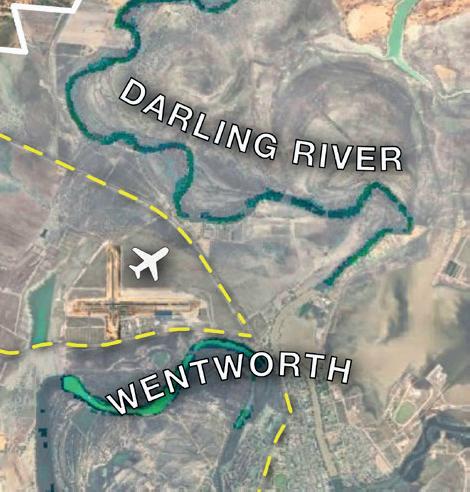






















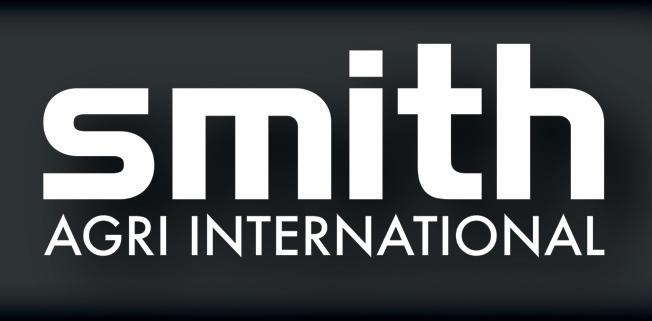




This Christmas, Swan Incorporated is giving reasons to shop local

ThisChristmas,SwanHill Incorporatedisgivingyoumore reasonstoshoplocal!
From1-24December,we're unlockingnewprize’severysingle dayonSwanHill'sbiggestever AdventCalendar.
From 1-24 December, w unlocking new prize’s e day on Swan Hill's bigg Advent Calendar PROMOTION COMMEN
.
Shop local, support ou and go in the draw to vouchers from local b
Shoplocal,supportourbusinesses, andgointhedrawtowindaily vouchersfromlocalbusinessesas wellasSwanHillGiftCardsworth hundredsofdollars.



















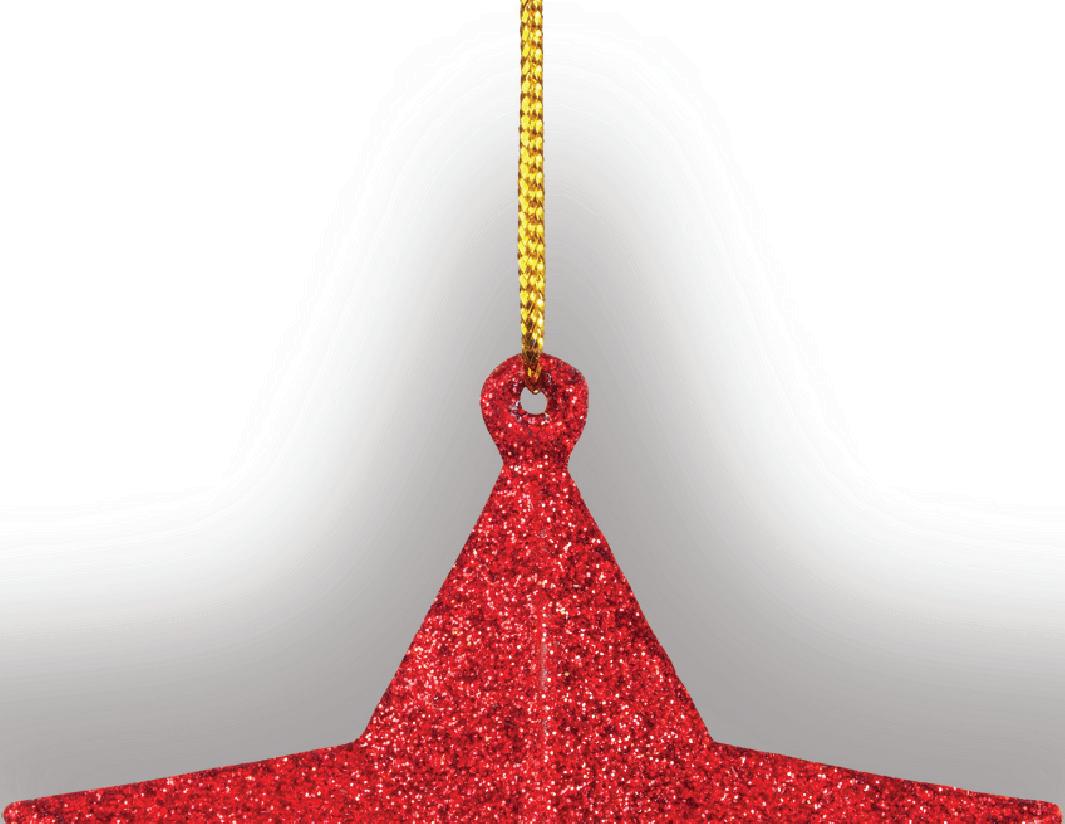


Shop local Scan th r businesses, win daily usinesses as well as Swan Hill Gift Cards worth hundreds of dollars.








Shoplocal atanyparticipating businessbetween 20Nov-24Dec

at any participating business between 20























ScantheQRcode instoreorbyvisiting: https://www.swanhilli ncorporated.com.au/ christmas-shop-local











Uploadyour receipt foryourchanceto win













over and over.
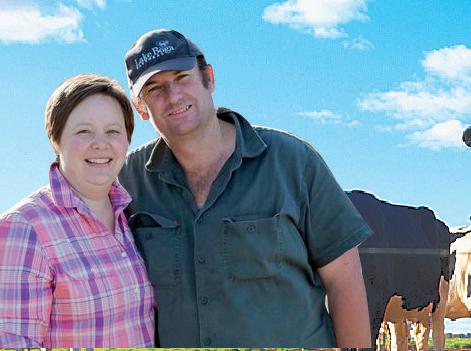

THE number of tradies working on the expansion of the milk factory on a daily basis is dropping rapidly, and we are ge ing near the pointy end of the stick. What a surprise - everything has gone over budget. Usually when I work on a capital project I make sure I can handle up to 30 per cent overruns before I proceed.
We are breaking those self imposed limits at the moment.
If I was being hard on myself I’d say, blind Freddie could have seen this coming and isn’t the definition of an idiot someone who makes the same mistakes
If I was being kind to myself I’d say we are doing a high quality commercial job that should set us up for the next 10 years – kindness is the go!
It’s unlikely you will see new products on the shelf before Christmas, but I think in three weeks we will be firing up the new continuous flow pasteuriser for commissioning.
We turned over the milk separator last week and it did what it was told. It spins at approximately 11,000 revolutions per minute, so if it comes loose I will need my road runner shoes on.
One of our challenges from the get go has been that the clay particles on our farm are smaller than the fat particles in the milk, so it’s really difficult to filter those impurities out.
This should resolve the issue and hopefully give us more shelf life stability, particularly after wet weather events.
The new homogeniser was not doing what it should and I apologise if you got a dodgy bo le - that’s totally on me.
In this gig where you are selling food direct, any
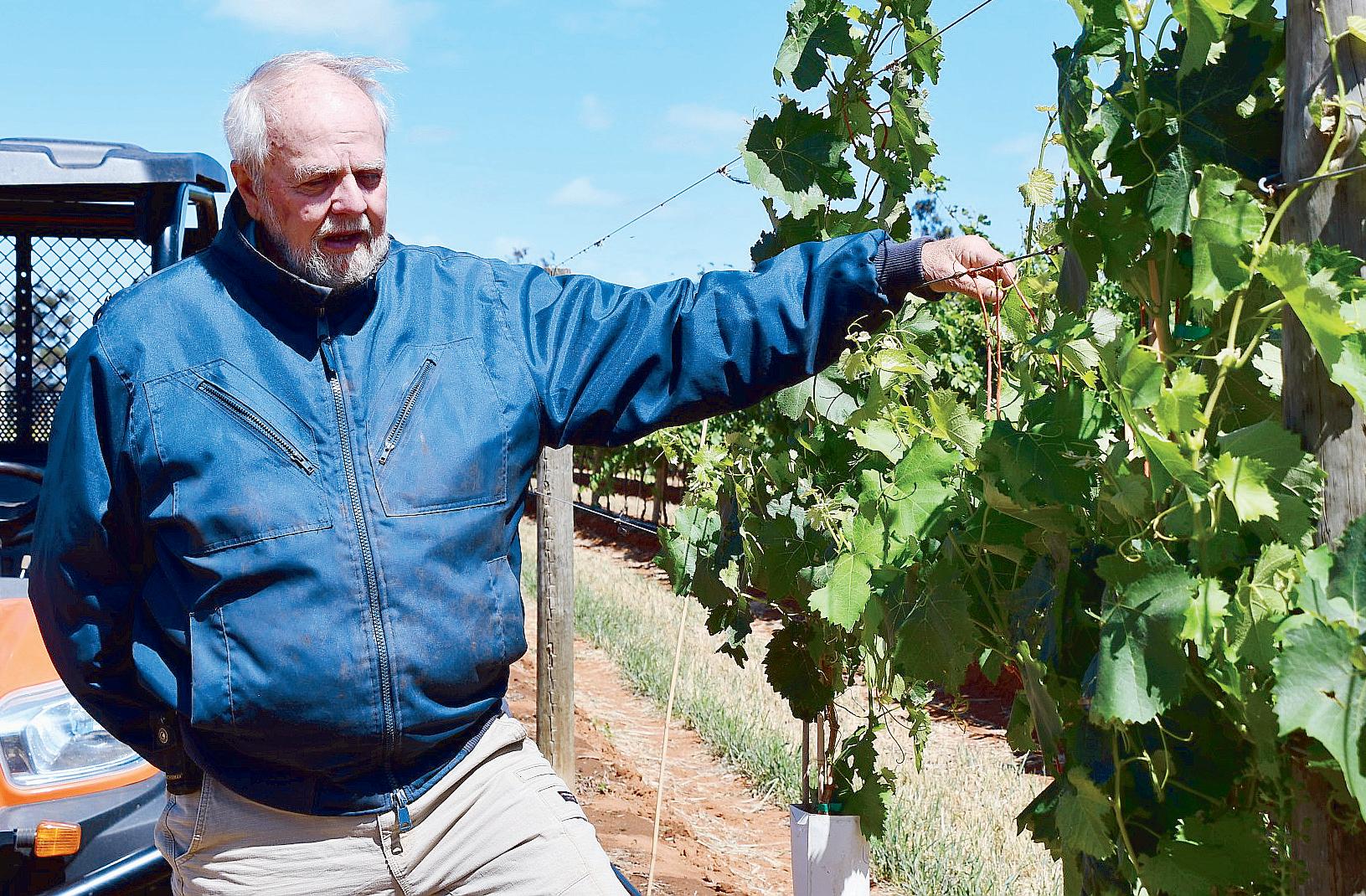
failures are very public.
It’s really valuable and important to us that people let us know if they have had a substandard product so we can assess and act if needed.
If it’s a food safety issue we would issue an immediate recall and pull product from the shelves.
If it’s a food presentation issue (which it was in this case), we have to make a decision and because of the Melbourne Cup, we were too far through the weekly cycle to make a difference.
Usually we mix the chocolate in the milk and then homogenise but to try and get a bit more efficiency we homogenised the milk and then added the chocolate.
That didn’t work out so well and any lumps of cream/fat through the chocolate milk, is totally on me,
Why wouldn’t you try any process change on a small scale in the laboratory (which we now have - yay) instead of doing it in a whole batch first up?
Could I be any sillier - yes is the answer.
So sorry, sorry, sorry, have I damaged our brand with our customers - yes of course.
Have I damaged our brand with the retail stores we deal with - yes of course.
Will we recover - I hope so.
When we first started bottling milk if we had sent out some product that wasn’t perfect, I would want to lock myself in a dark room, and I would feel physically sick because I’d made a sub standard food product.
Now I don’t want to say I’ve become acclimatised to stuff ups, but I’ve sort of worked out that my place is to put as many safeguards in place as we can to make sure our product is top shelf, and if something goes astray my place is to manage the process of identification, assessment and action taken. Does it make it feel it any be er - no, but I have a path to follow.
If this all ever gets operational then I need to go on asalescampaigninMelbournetogetnewcustomers. I can’t stand Melbourne, actually anywhere with more than about 30 people, but I will do it because weirdly I still believe in what we are doing, that we can make it work, that long-term it could be a really good thing for Lake Boga.

IN an industry deluged with challenges over the last decade that are forecasted to deepen, alternative grape varieties could offer viticulturalists and winemakers a lifeline.
Over the past two decades, grape varieties from diverse climates, soils, and altitudes - far beyond the French staples that dominated Australian vineyards through the 19th and 20th centuries - have steadily gained traction.
Mildura has long been a hotbed for wine industry innovation, birthing the Australian Alternative Varieties Wine Show (AAVWS) 25 years ago and stoking the appetite for wines outside of the mainstream in both creators and consumers.
Sincechef StefanodePieriandviticulturalistsBruce Chalmers and Dr Rod Bonfiglioli launched the thenSangiovese Awards in 2000, previously unknown varieties have entered the mainstream.
Mr de Pieri said the small producers around Australia saved the industry, without whom it would be boring and offset by imports.
“The good thing is that Australians are openminded with extreme curiosity, while in Italy and France they are rooted in their traditions and regions, and if anything, young Europeans are dropping out of consuming wine altogether,” he said.
“We are now pouring fiano as if it has been around forever, pinot grigio is no longer an alternativeproducers have made alternatives identifiable and primed consumers to take the risk.
“The big end of town lags behind, but the wine industry would be dead without alternative input.”
An industry in turmoil
Murray Valley Winegrowers Inc chief executive Paul Derrico said growers were leaving the industry as the financial equity they built has been eroded over time.
“Increasing costs of water, inputs, and labour have all made it very difficult for growers to continue,” he said.
“Grower numbers have dropped from 1300 growers
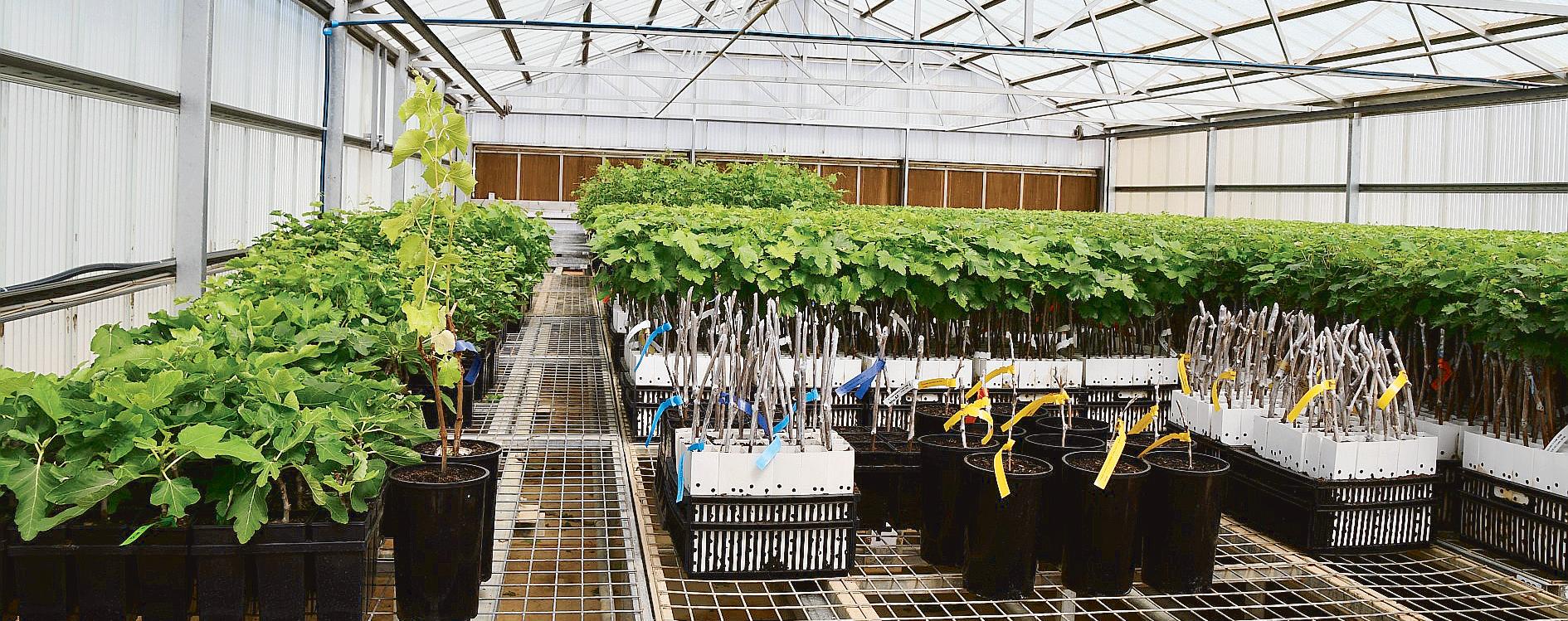
just over 20 years ago to less than 300 - growers have spoken with their feet and walked away from the industry that can’t sustain them.
“There is a worldwide glut of red wines, so in the current climate it’s hard to sell those grapes and some growers have sprayed their crop off and cut their vines back hard so they don’t produce too much.
“The 2026 vintage is anticipated to be the most difficult year, and the long-term is really uncertain, not just for growers in our region but the wine industry in general.”
In 2022, 20,000 tonnes of red grapes grown in the Murray Valley were dumped.
Vineyards around the region are being sold, dried, and pulled out at the stumps to be replaced with housing developments, olive groves or citrus orchards.
“Growers in positions to look at alternate varieties could consider that, but many growers don’t have the financial resources to look into them - they’ve been losing money for a number of years with no government support to exit the industry or develop their operations,” Mr Derrico said.
“Along with identifying alternative varieties best suited to our regional conditions, growers need to find a winery that is prepared to take on those
varieties, as there is no point in planting and hoping for the best.
“We’ve seen the success of the AAVWS, with some varieties that started off small but developed some niche markets, but the market will need to improve over time to be a more lucrative option for growers.”
Since Merbein viticulturalists and winemakers Bruce and Jenni Chalmers imported their first alternative variety vines in 1998, their nursery has been a heartland of Australian wine industry diversification, with more than 100 combinations of vine clones in stock.
Chalmers research and development blocks include trial varieties grafted to different root stock to observe vigour, drought tolerance and flavour after they have been made into wine.
ThemostrecentimportNerelloMascalesehascome from Mount Etna, Sicily, and the two vines planted on their own rootstock in the Chalmers vineyard are the first of its kind in Australia.
The block of negroamaro, planted in cow manure and compost and grown in the albarello style as bush vines on red Murray sand and limestone, has had no
irrigation since the day after the 2025 harvest and has only been sprayed once with copper and sulphate, and was laden with bunches ready to fruit.
Winemaker Kim Chalmers said the industry had matured, as producers have acknowledged that wine is not just a commodity, but an artisan, providence product carrying a story of people and places.
“Having a greater selection of varieties allows growerstofinetuneforplace-itsclimate,soil,culture, lifestyle, food and the broader environmental and social aspects of growing and making wine,” she said.
“It’s flipping the thinking, to match the variety to the a ributes and characteristics of the place, and if you have a plant that is happy in a place, it’s less work growing and producing the wine.
“For Merbein and Heathcote, we’re looking for varieties that fruit later, have lots of natural acidity, with thick skins and a shady canopy.
“Riper grapes are more affected by heat, so in a heatwave, a greener grape will be less cooked, but in a cooler region, a late fruit will likely never ripen because it will miss the peak heat.
“Higher acid retention means acid doesn’t need to be added during production, saving the cost of citric acid.
“Alternative varieties are not just to be different, it’s a concept rooted in the right thing in the right place.”
Chalmers vineyards supply fruit to about 50 producers, from half tonne through to 30 tonnes.
“We offer producers the opportunity to experiment and play in the space, see if they like the style without commi ing to planting first,” Ms Chalmers said.
Meanwhile, Mr Chalmers said it’s been very rewarding to see the adoption of vines from his nursery across the industry.
“Almost every wine list in Australia has alternative varieties, and much has been sourced from our nursery,” he said.
“Mildura could reinvent itself to use less irrigation, but it’s hard to get the return while people still consider the region to be large volume at low value.
“Planting for the complex set of circumstances in a place can make vineyards so much more sustainable and the wine tastes so much be er.”



Warnings Information at www.bom.gov.au/vic/warnings or Ph: 1300 659 210 (local call cost)
Mallee
Mostly sunny. Winds south to southeasterly 15 to 25 km/h.
Saturday. Partly cloudy. Medium chance of showers, most likely in the afternoon and evening. Winds southeasterly 15 to 20 km/h becoming light during the morning.
Victoria
Partly cloudy about the south and mostly sunny in the north. Possible local frost patches. Cool to mild in the south tending warm in the north with maximum temperatures remaining below average. Southeasterly winds.
Saturday. Isolated showers developing in the east and west, extending throughout by the end of the day. Mild to warm with maximum temperatures nearer average. Northeast to southeasterly winds.
6:08am8:16pm6:11am9:26pm 6:07am8:17pm6:54am10:22pm 6:07am8:18pm7:43am11:12pm 6:06am8:19pm8:39am11:57pm 6:06am8:20pm9:39amNil 6:05am8:21pm10:41am12:36am


Chances of exceeding median maximum temperature.
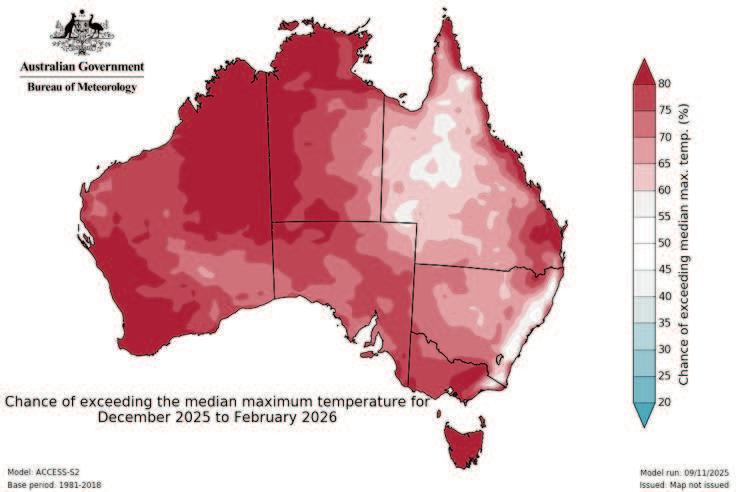
Chances of exceeding median rainfall.
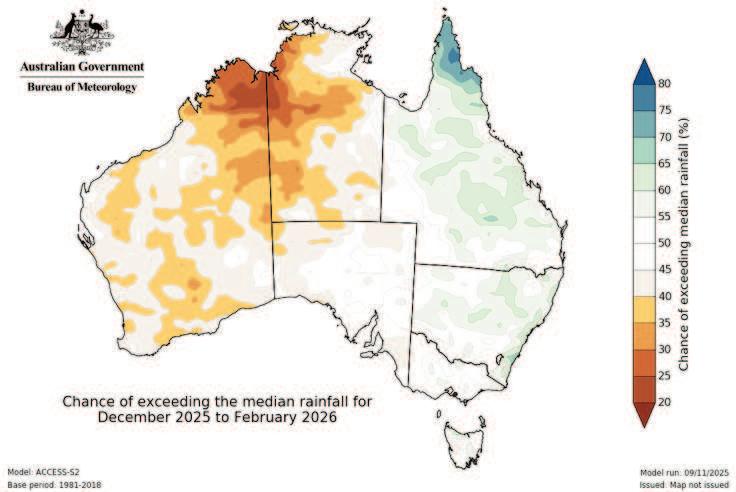
Capacity% FullCurrentChangeLast Year Dartmouth3,856,23273.52,832,2933,5293,432,102 Hume3,005,15746.21,389,389-44,1331,678,696 Eildon3,334,15856.11,869,0799252,817,836 Others1,421,54561.9879,741-9,6501,026,842 Total11,617,09260.06,970,502-49,3298,955,477
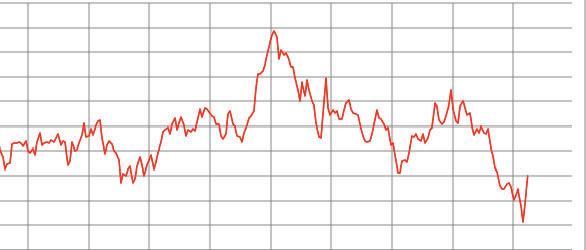
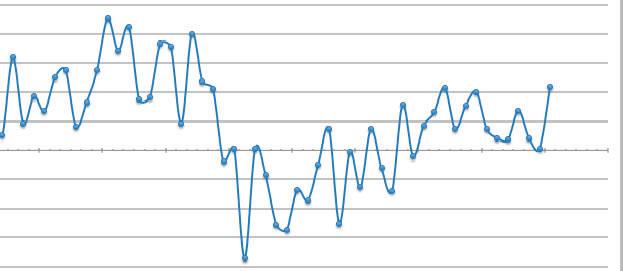

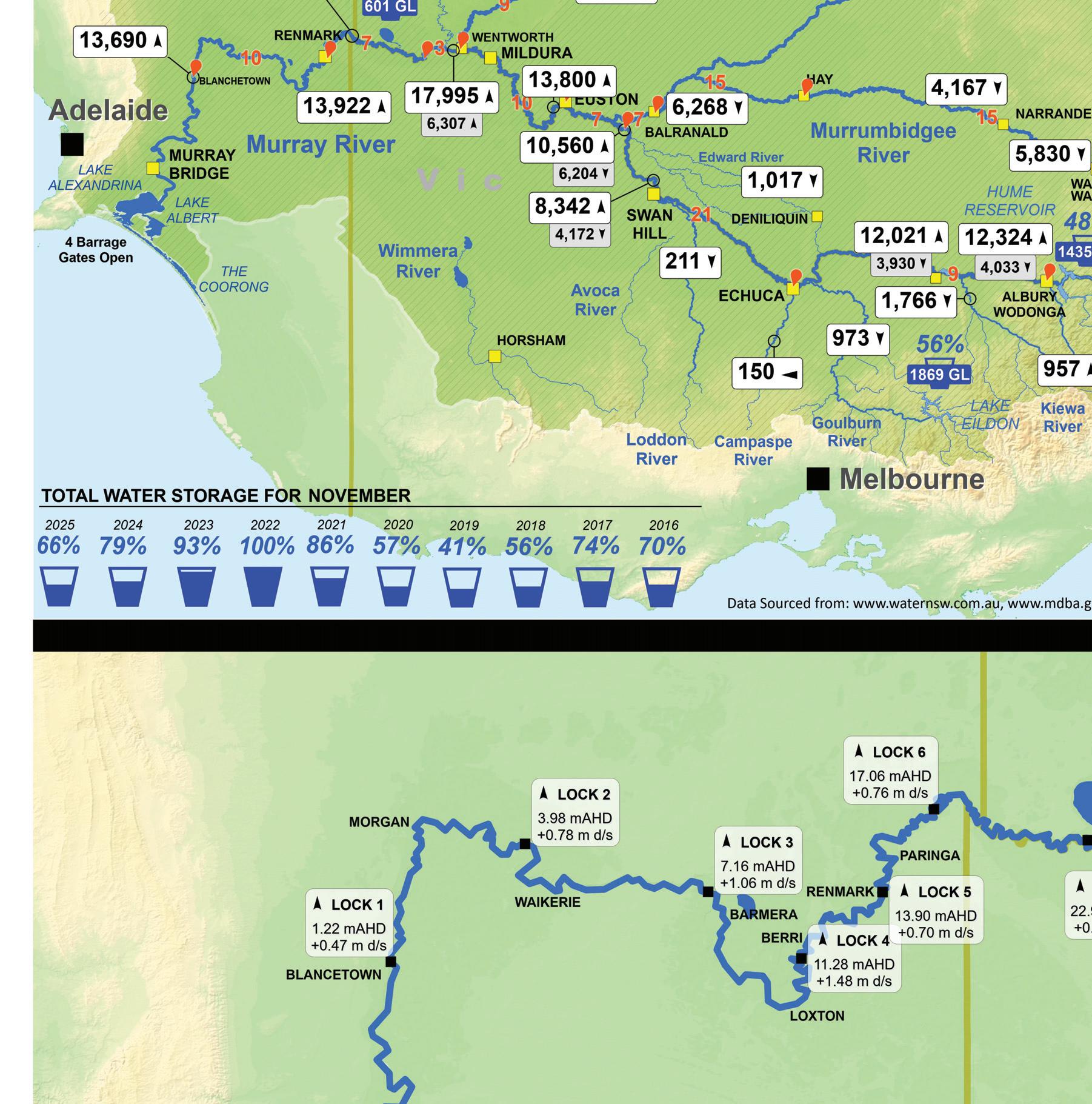
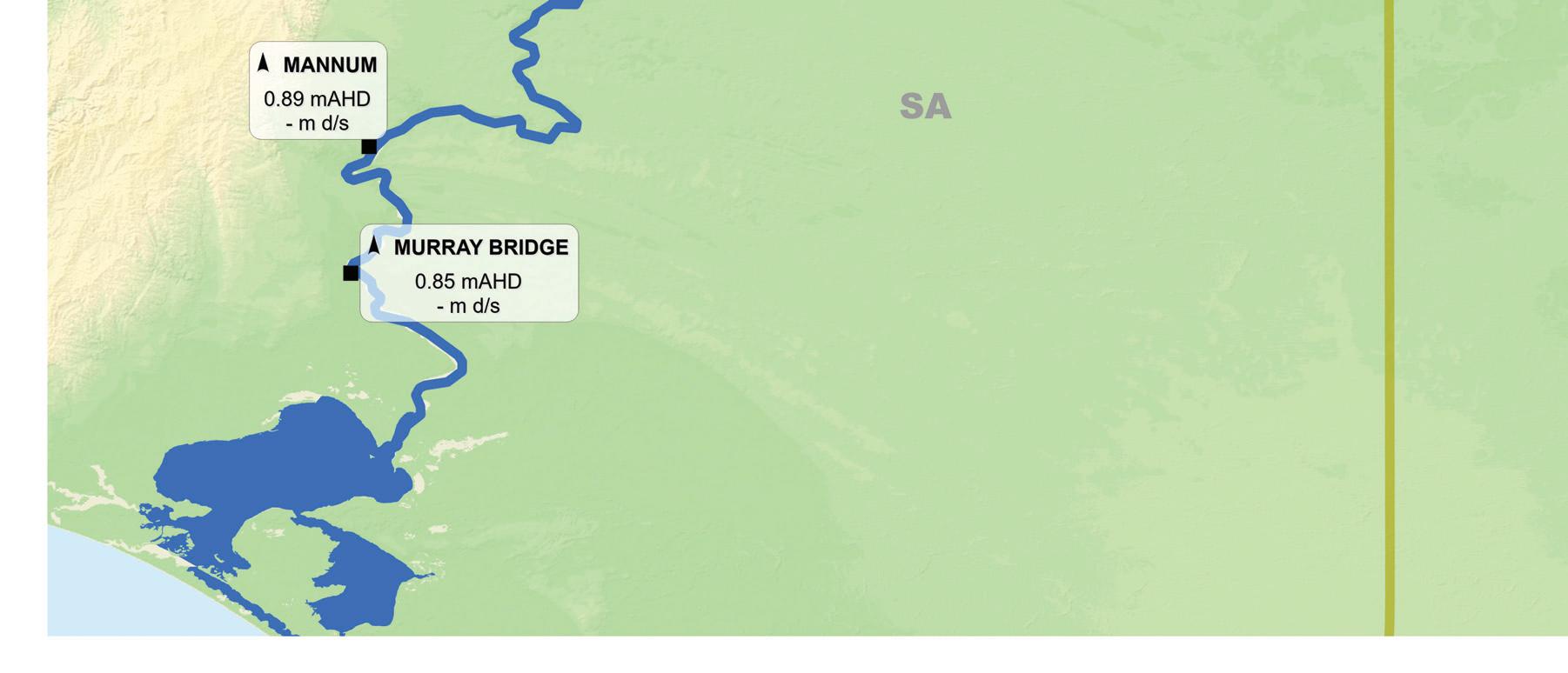



The federal government’s Voluntary Water Purchase Program, under the Restoring Our Rivers initiative, is accelerating to secure 450 gigalitres (GL) of additional environmental water by 2027. This includes the Restoring Our Rivers Expression of Interest 1 (EOI 1) for Remaining Southern Connected Basin Catchments and EOI 2 Large Portfolios of Water.
RuralcoWaterbrokerJonArmstrongadvised“following Ministerial approval for an extra 130GL, participants who submitted to EOI 1 may soon be shortlisted and invited to tender in the next stage”.
“What does this mean for EOI 1 participants”? “Good news” Jon explains.
In September 2024, the Commonwealth asked surface water rights owners in the southern connected Basin about selling their water. “EOI 1 was focused on Irrigation Infrastructure Operators (IIO’s) and the Goulburn in Victoria “ Jon says.
“These insights, captured from the responses, enabled the Commonwealth to engage with IIOs and relevant Basin state governments to better understand potential risks and opportunities for the future design of EOI 1, given the sensitivities around irrigation districts.” Jon explained.
“EOI 1 received a total of 1,020 responses with approximate volumes offered based on Long Term Diversion Limit Equivalent (LTDLE) of 162GL”. Jon continues.
“The department stated about half of the responses offer prices that align well with current market trends and could represent value for money”.
“EOI 1 closed in November 2024, and is ironically opening in November 2025, which has been a lengthy processtogettohere.Wehavehadlotsofconversations
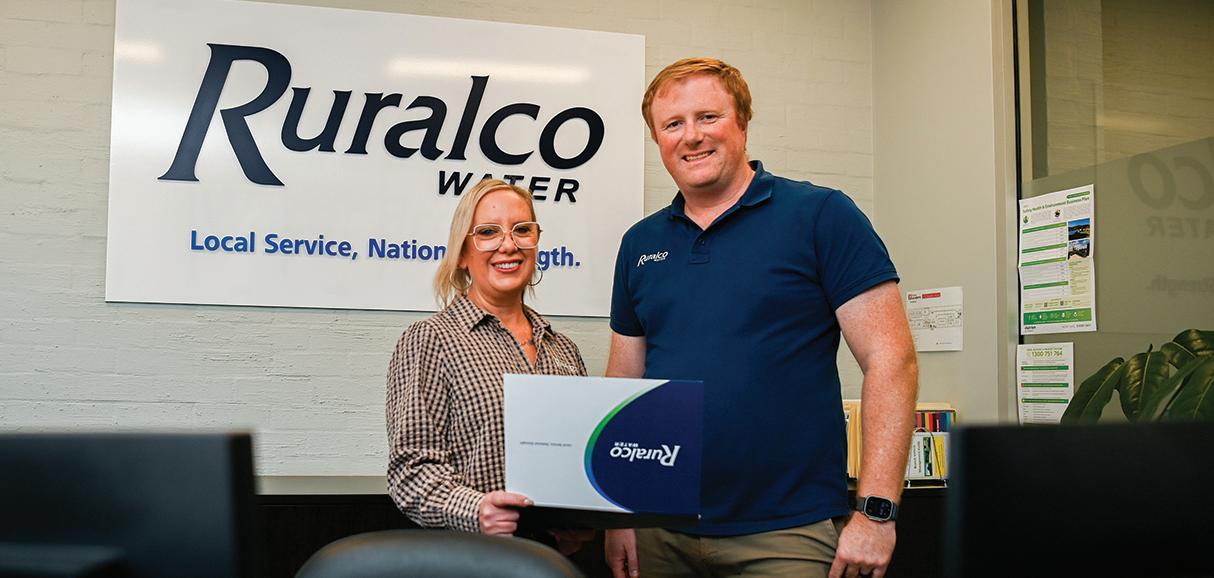
with clients over the last 12 months, wondering if we would ever get here,” Jon explains.
“Several details remain up in the air. We don’t yet know when or how the government will reach out to potentialsellers,howflexiblethey’llbeonnegotiations, or if they’ll zero in on specific valleys. Extra paperwork requirements are still unclear”. “And timelines, like open and close dates for tenders are anyone’s guess for now”. Jon states.
One thing is certain, market-led proposals, which are approaches to the Commonwealth outside of the EOI process, aren’t a sure bet. As the strategy notes, there’s no guarantee they’ll be considered, they must deliver value for money, comply with procurement
rules, meet Basin Plan objectives, and fit government policy.
The updated Department of Climate Change, Energy, the Environment and Water website (DCCEEW) advises shortlisted sellers may be invited to submit a tender in the subsequent stage of the process. If you’re not selected right away, it doesn’t mean rejection. Your submission could still advance in later phases of this process.
For more details, please reach out to your local Ruralco Water broker.
Disclaimer – This story is based on information at the time of writing.




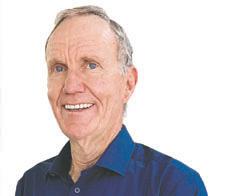
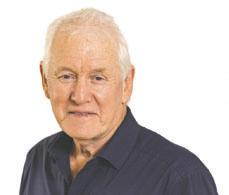






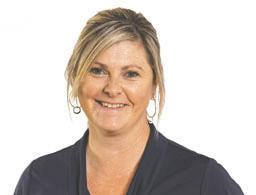





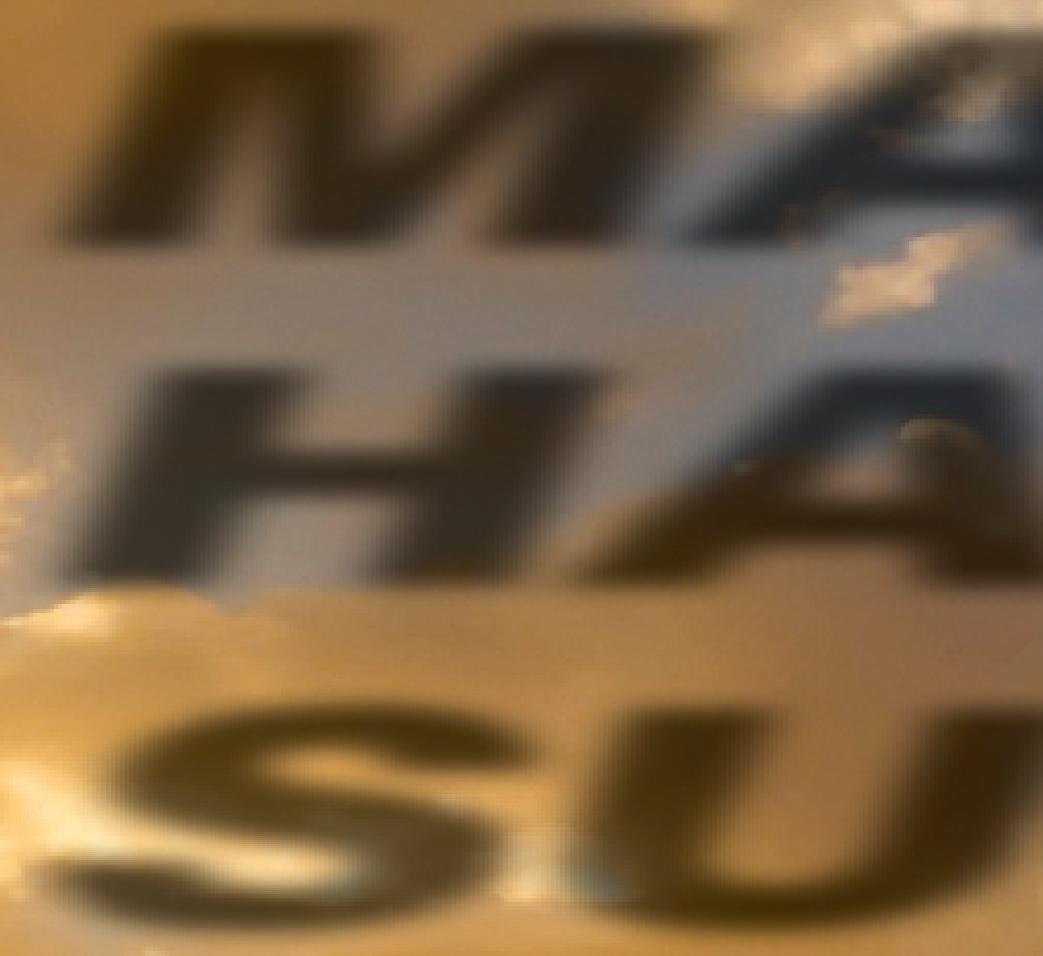





Talk to our profesional team and make the right tyre choice for your farm equipment.



The key role of high-quality tyres this harvest


The crew at Goodyear Curlewis Street have all your commercial tyre needs covered, from truck to tractor tyres and repairs – we do it all.
Stocking the biggest range of tyres in the area at competitive prices. With our on farm service truck, we have all your on site jobs and after hours call outs covered, we will keep you on the road or in the paddock.


